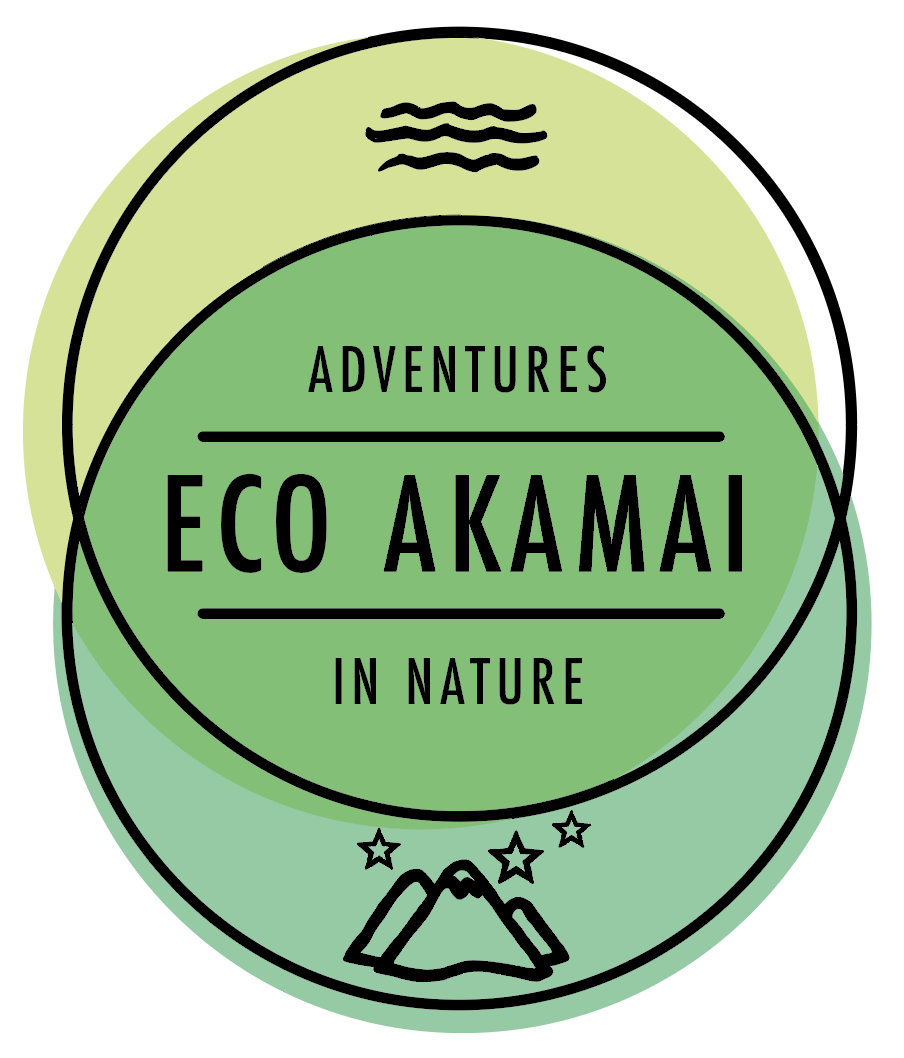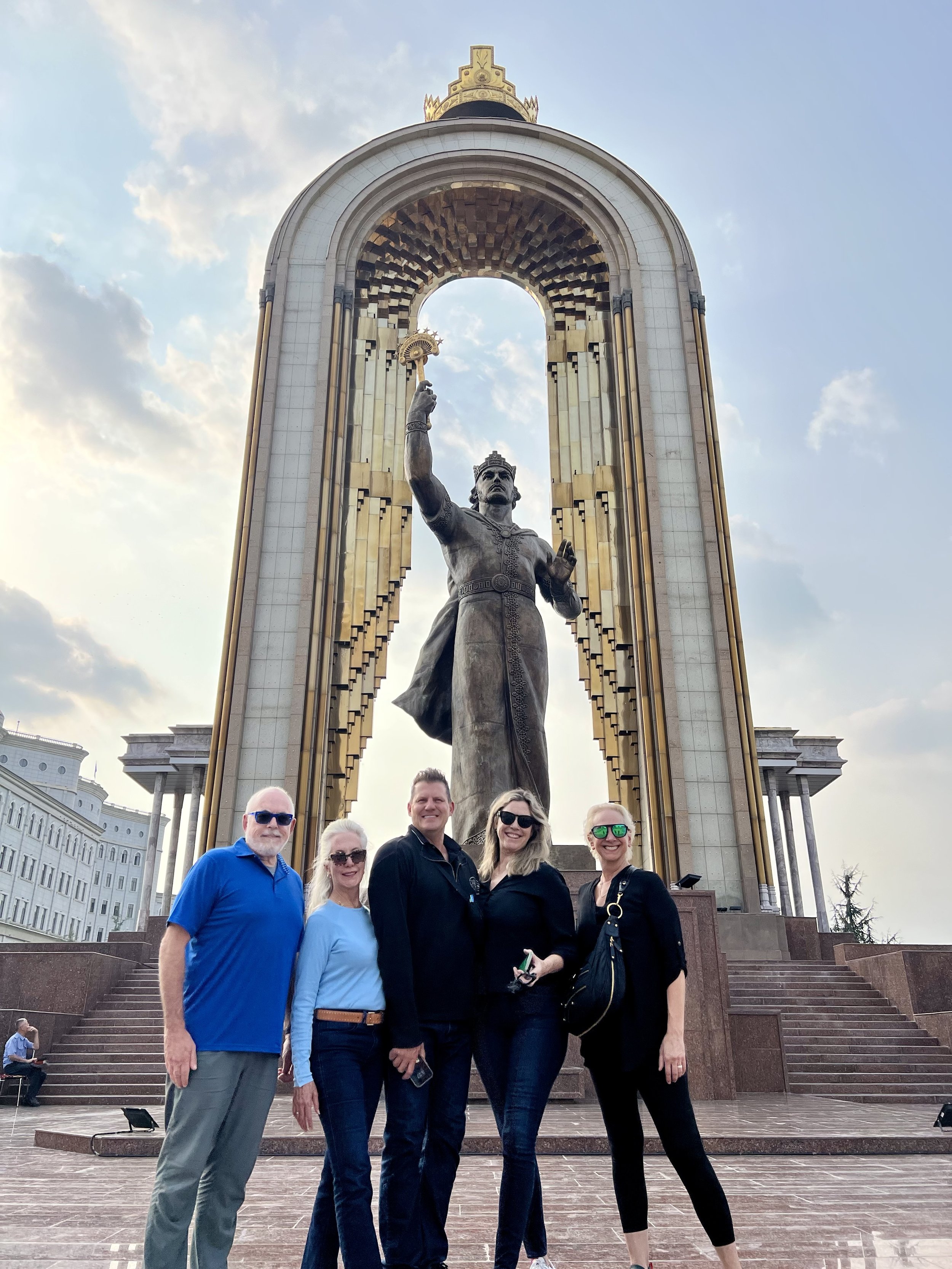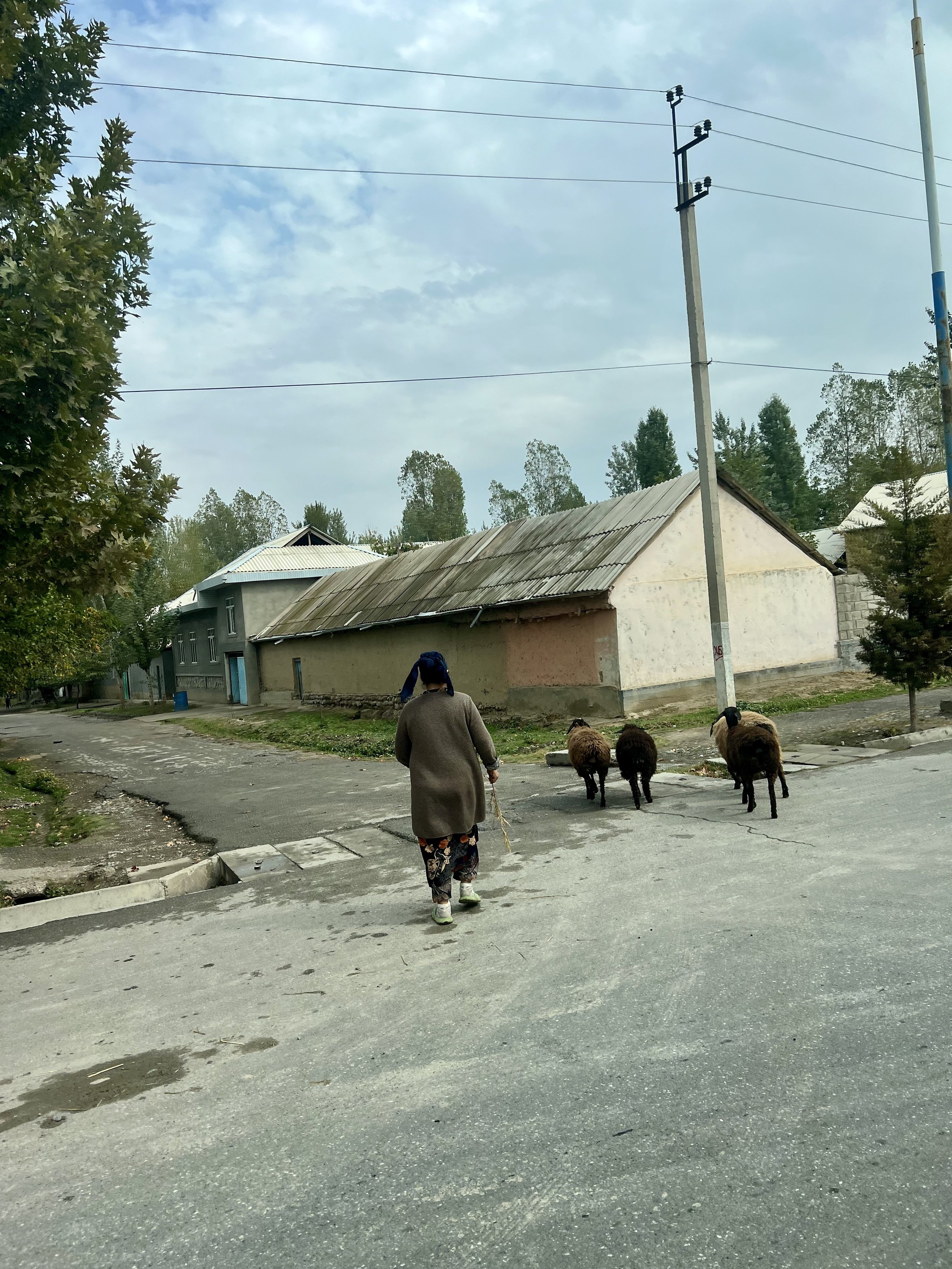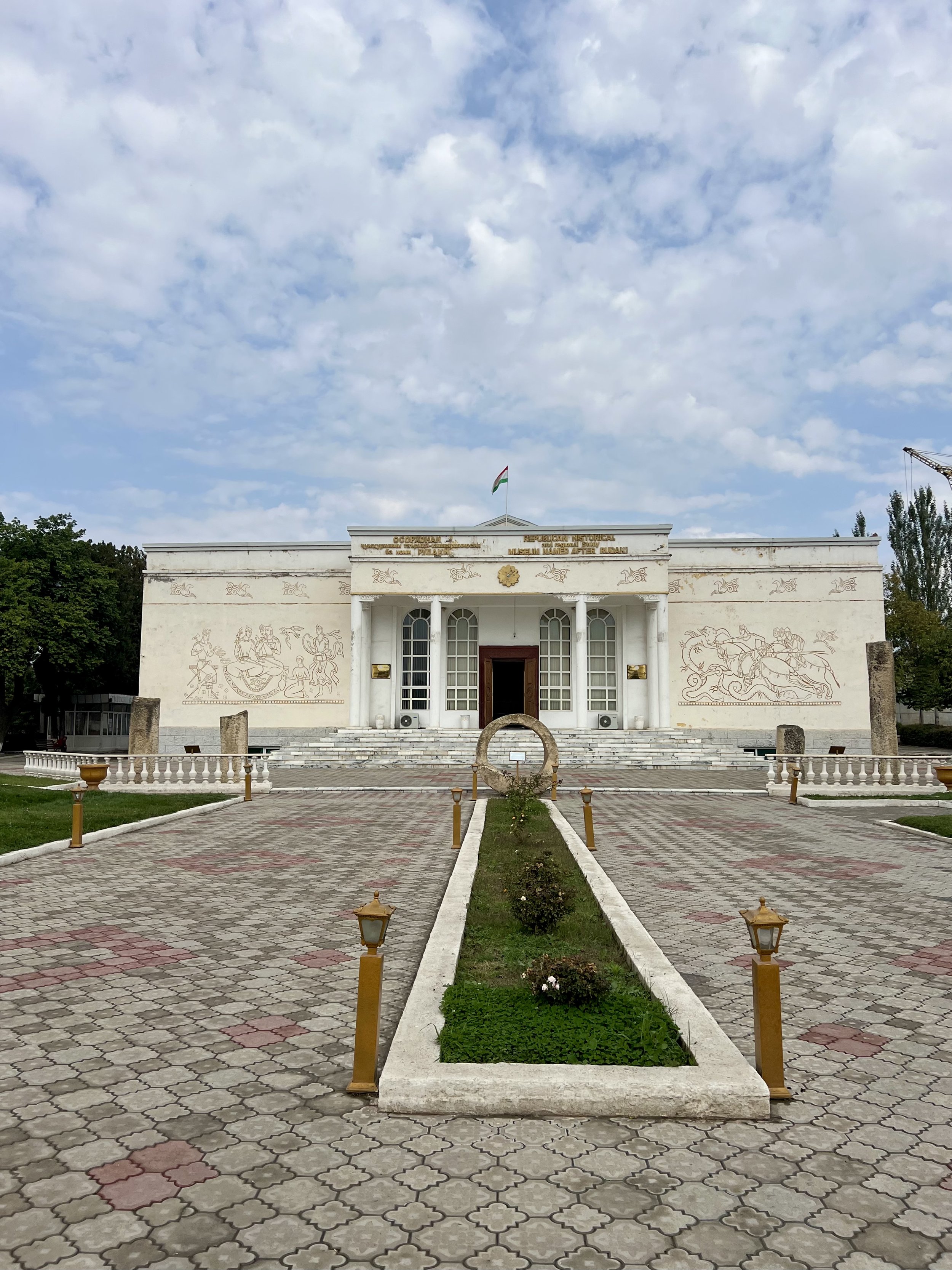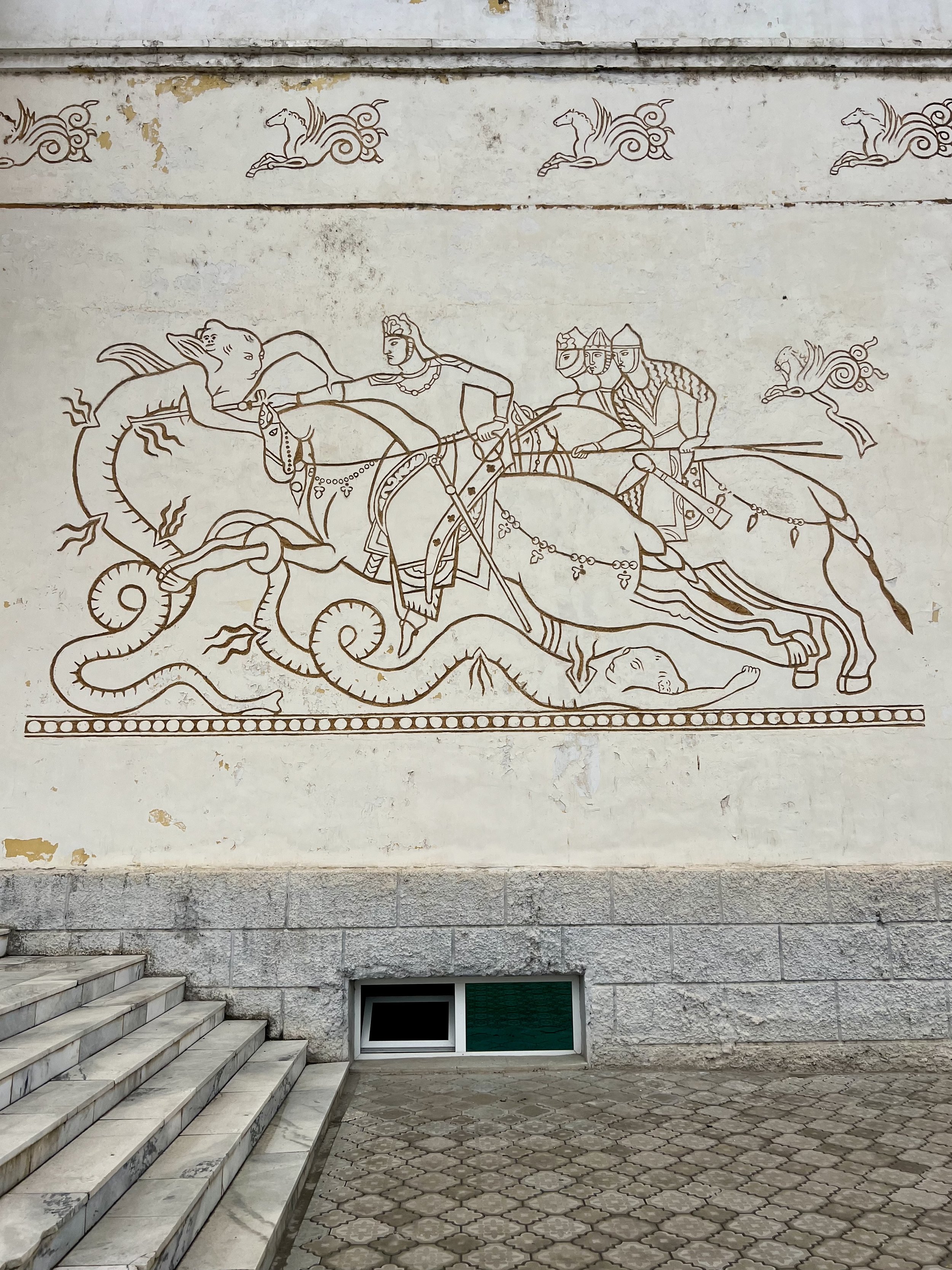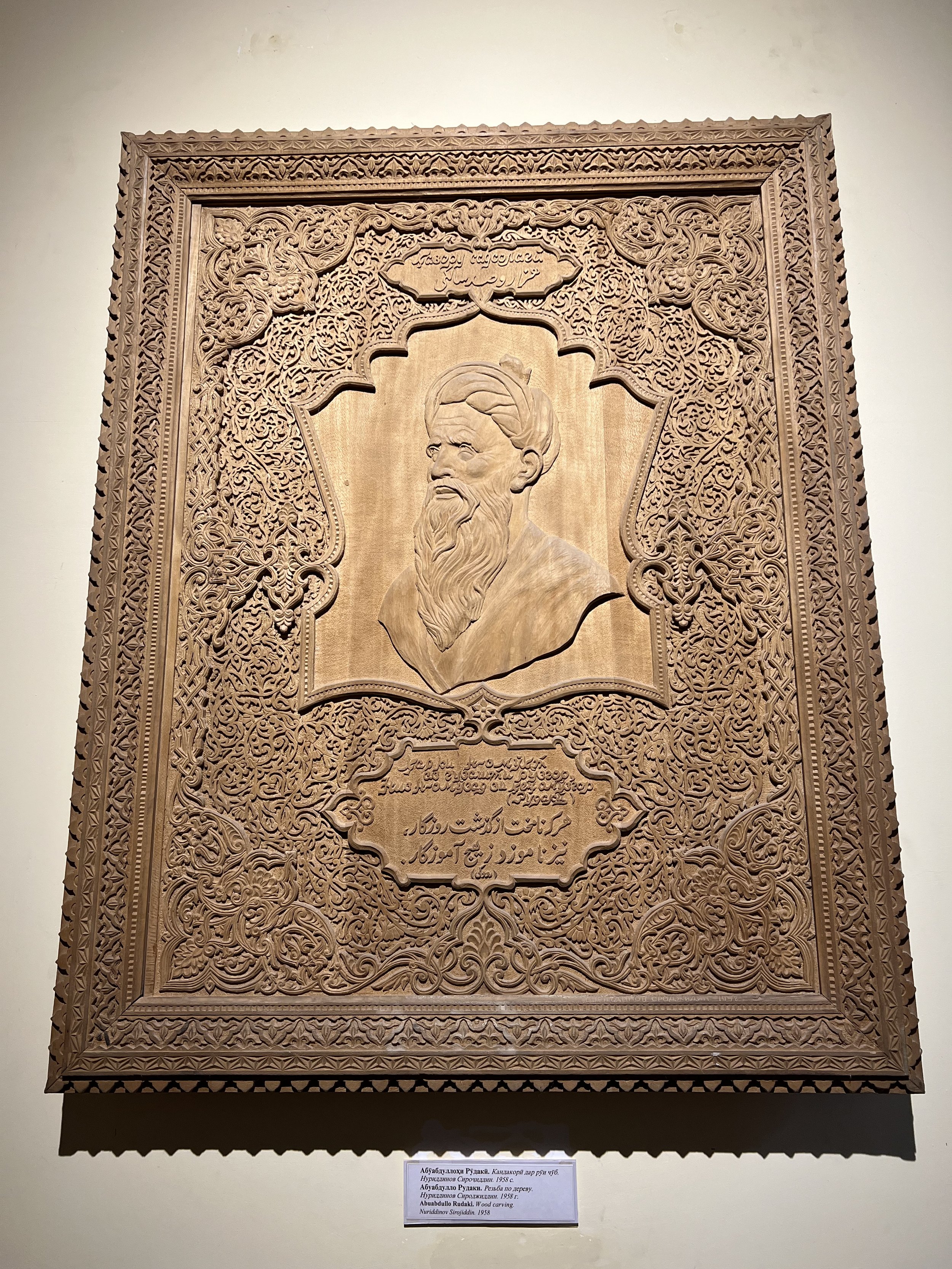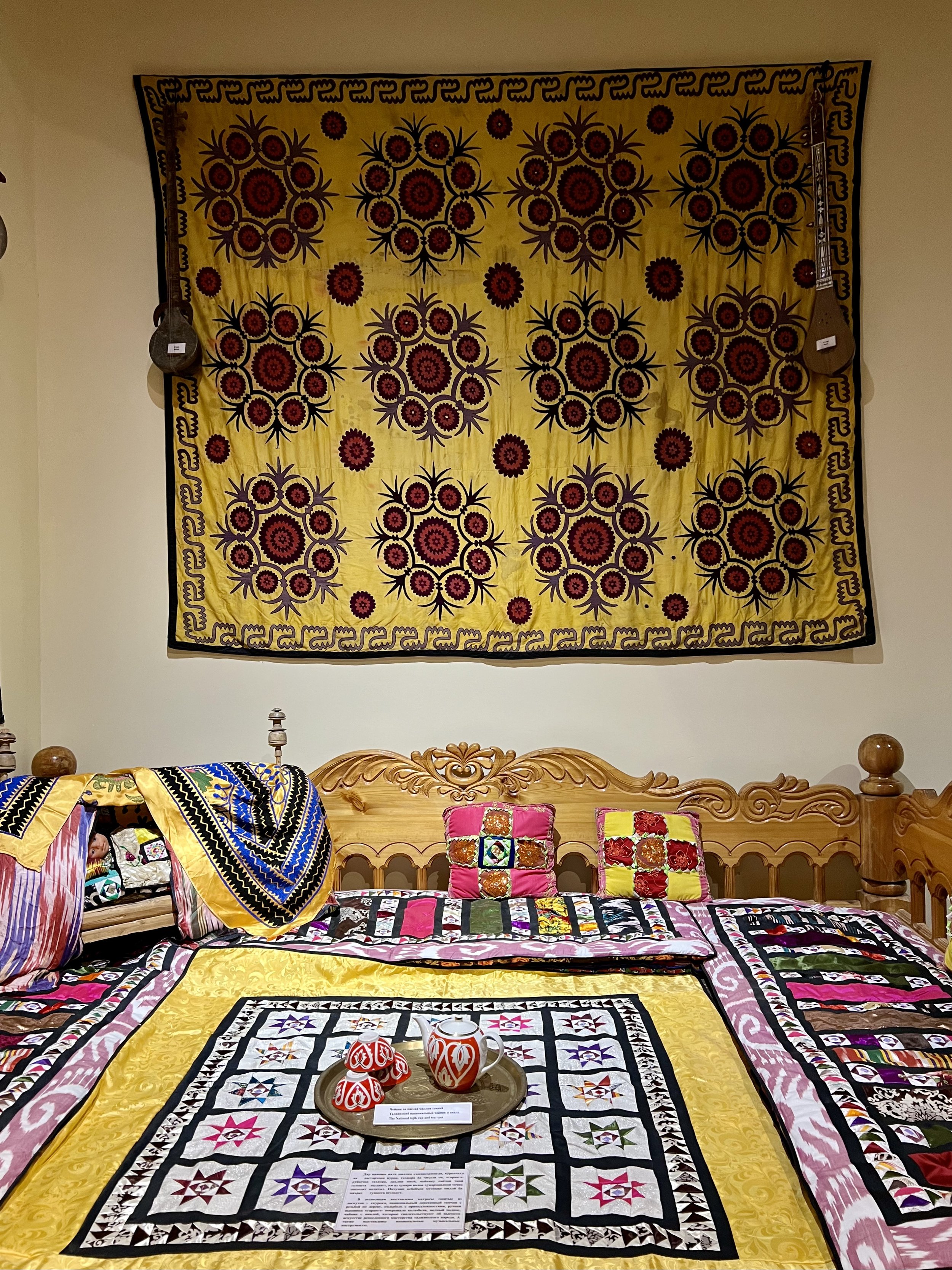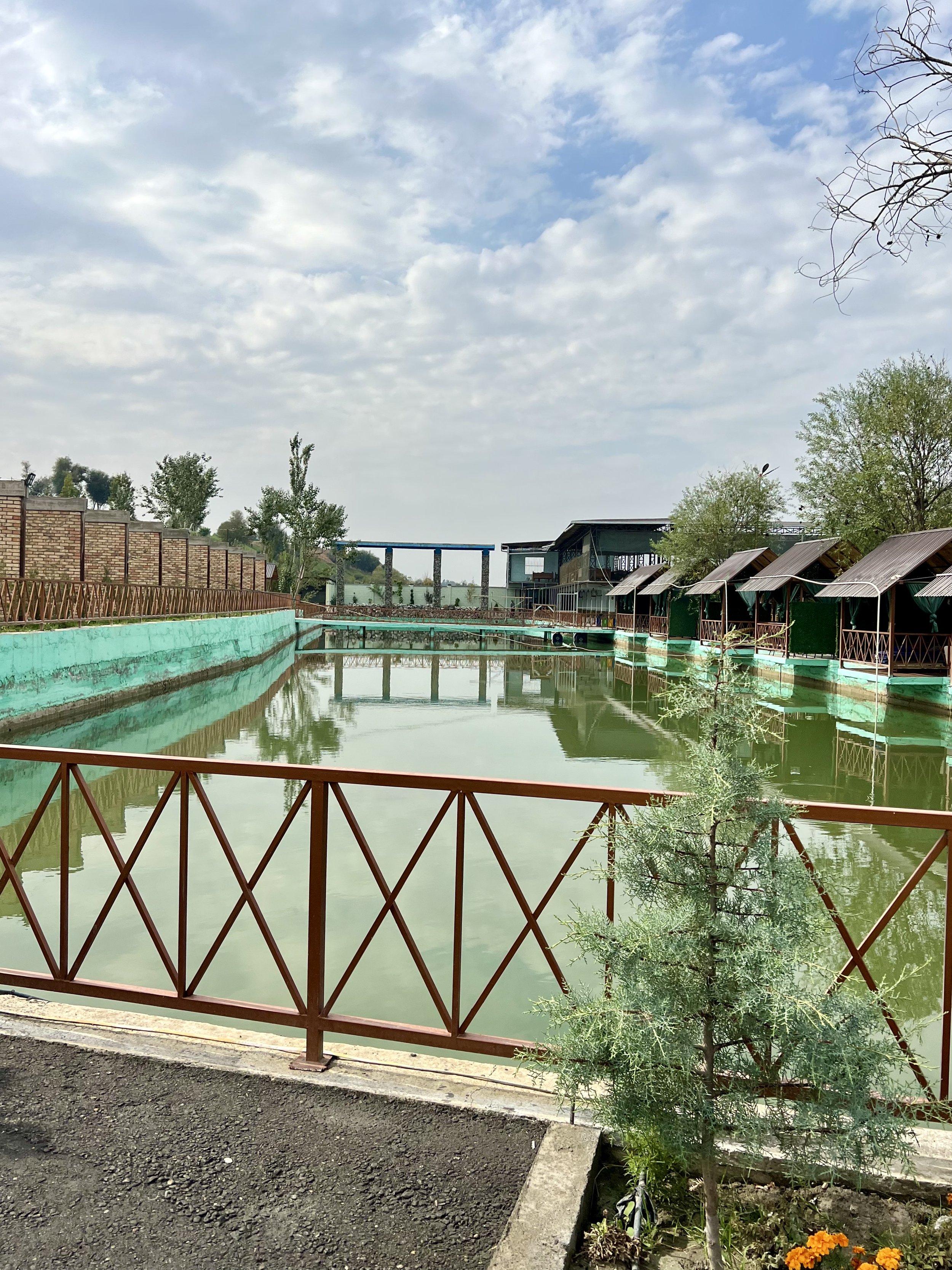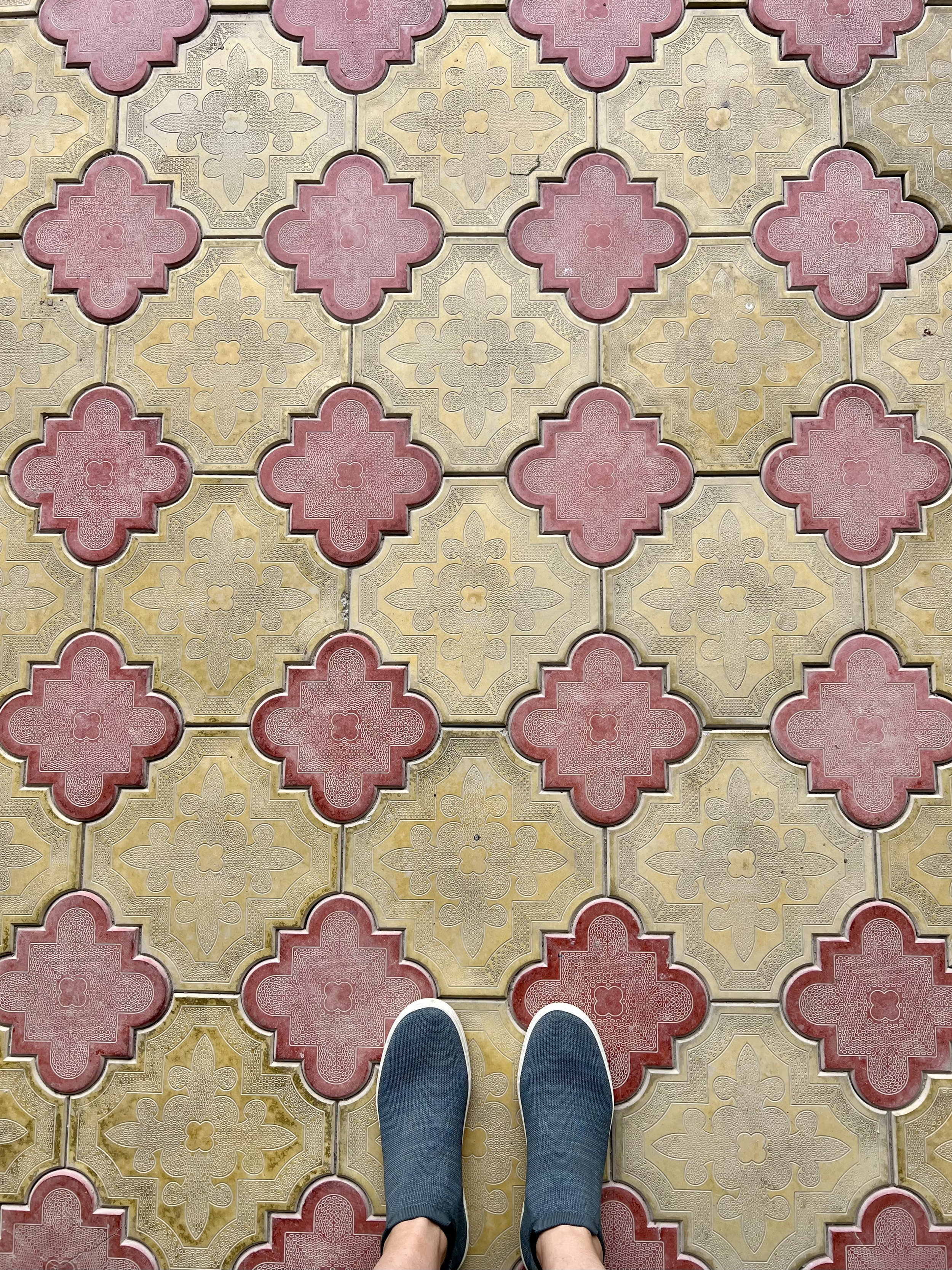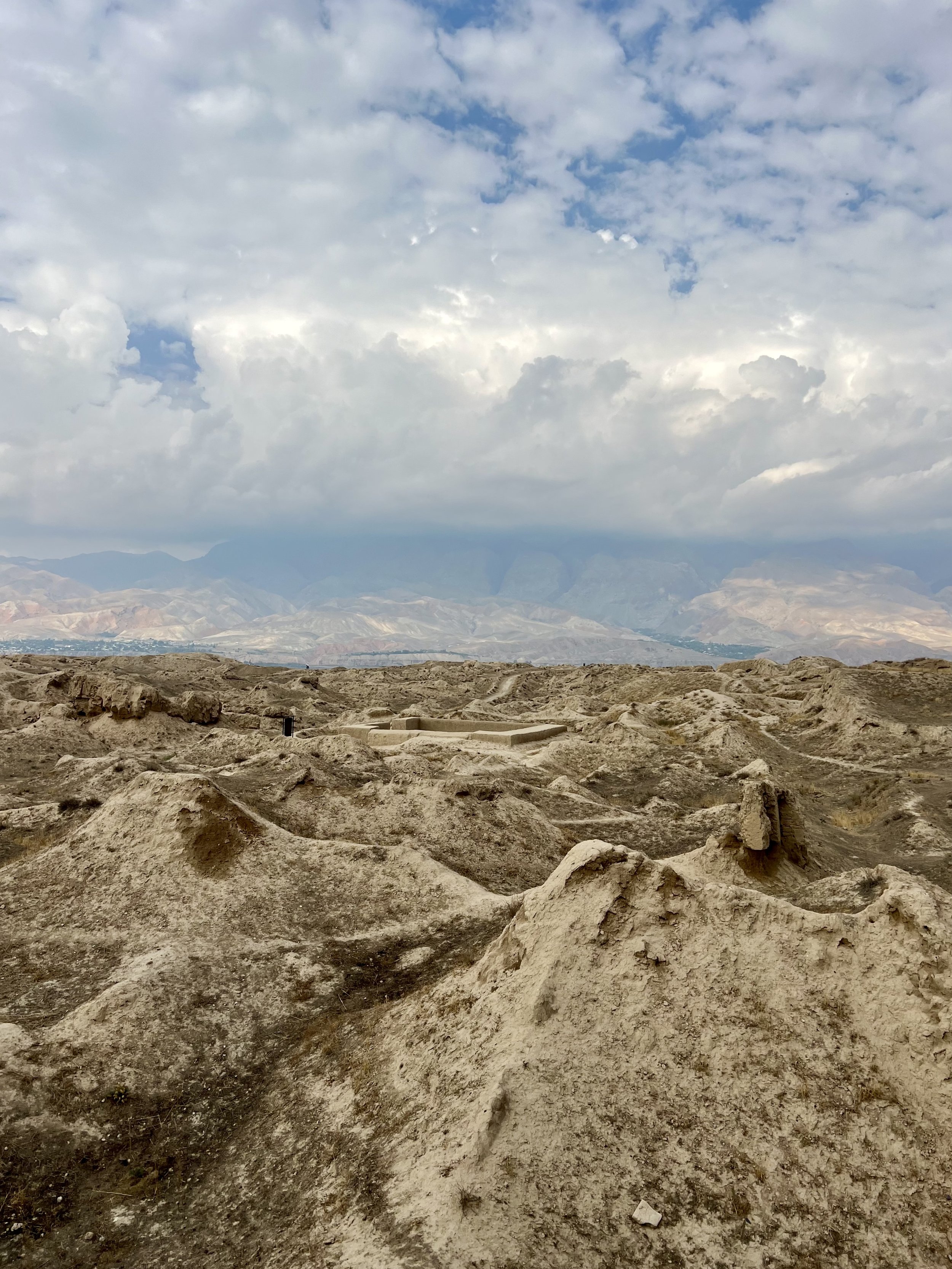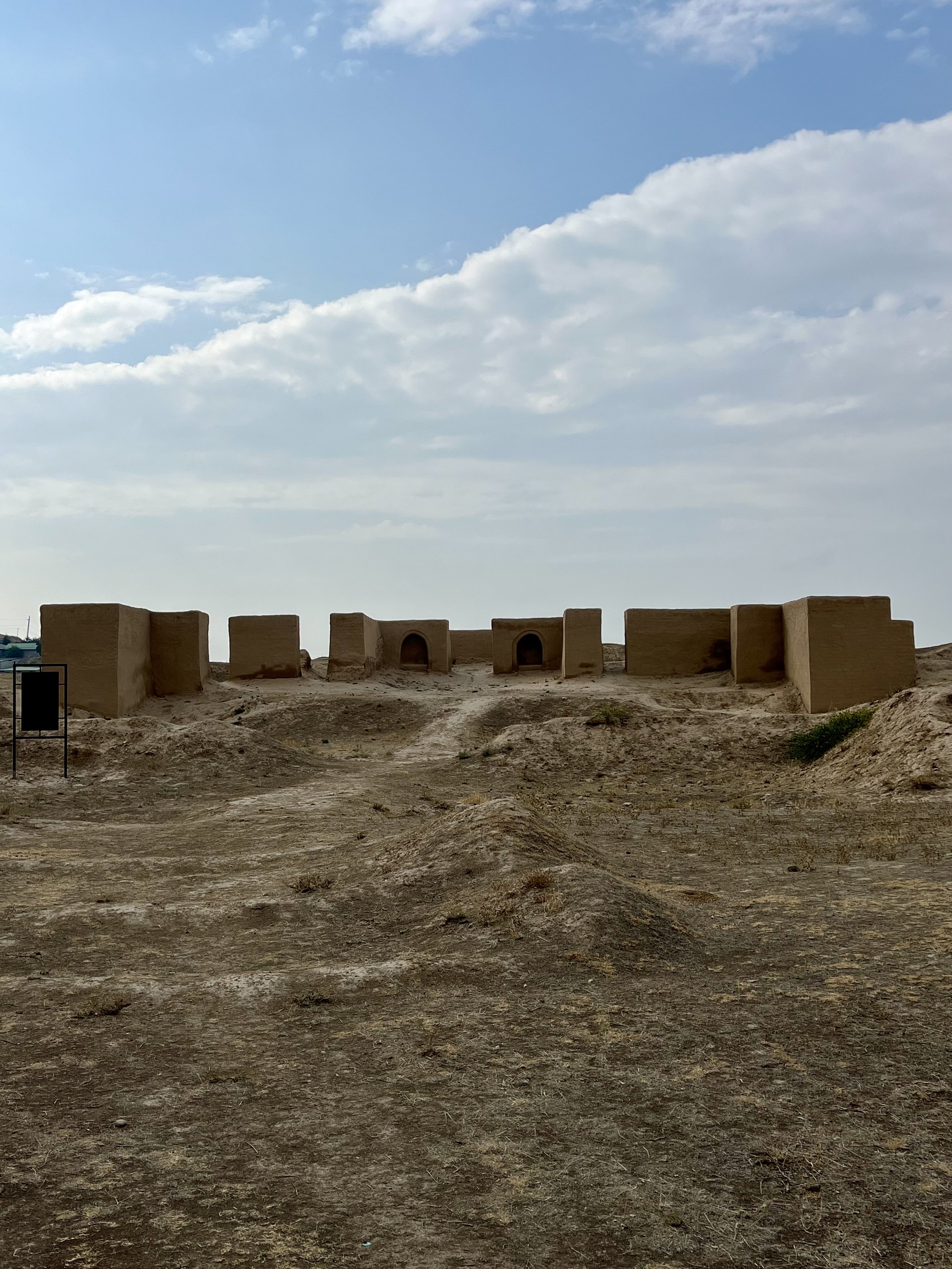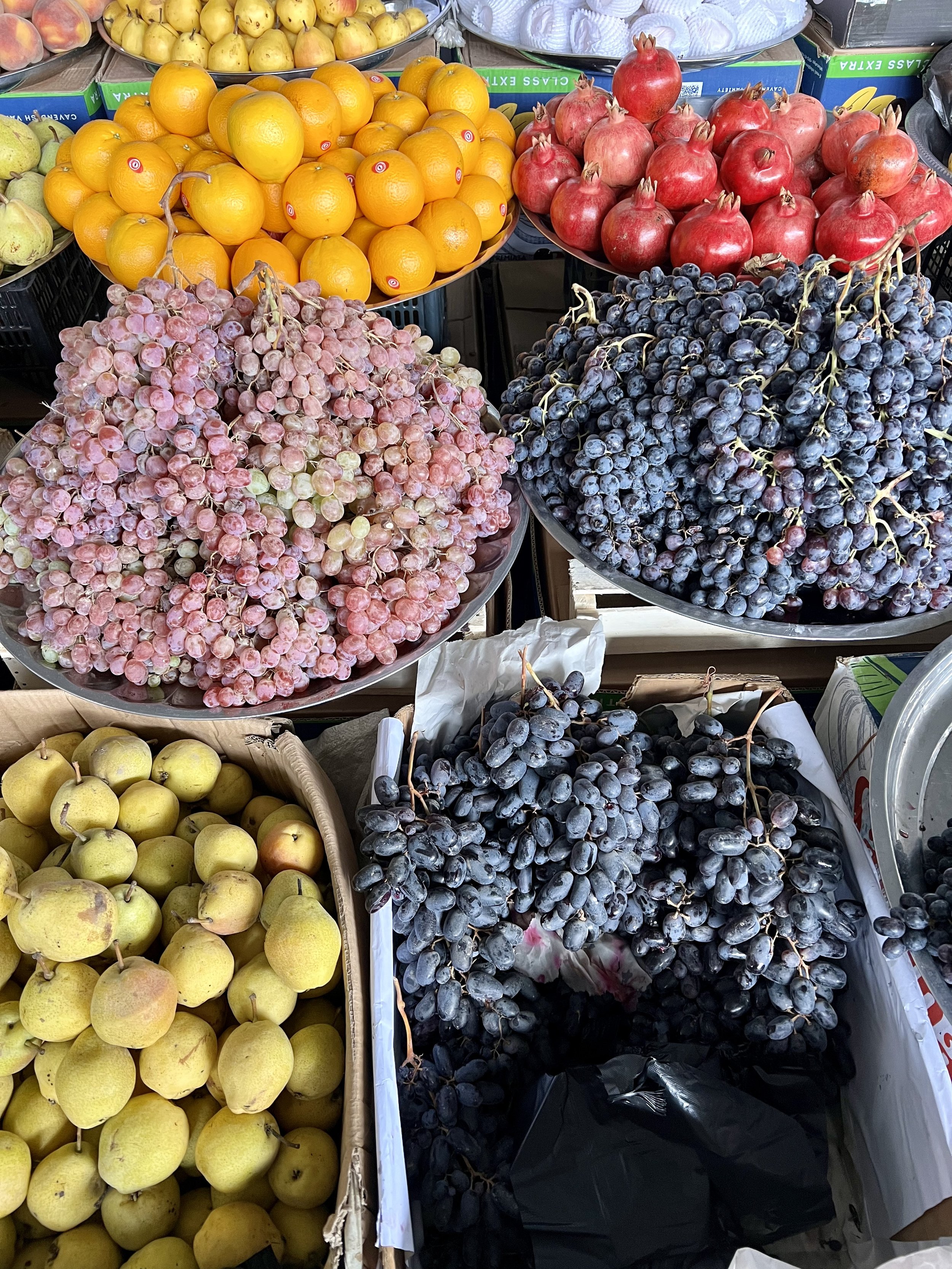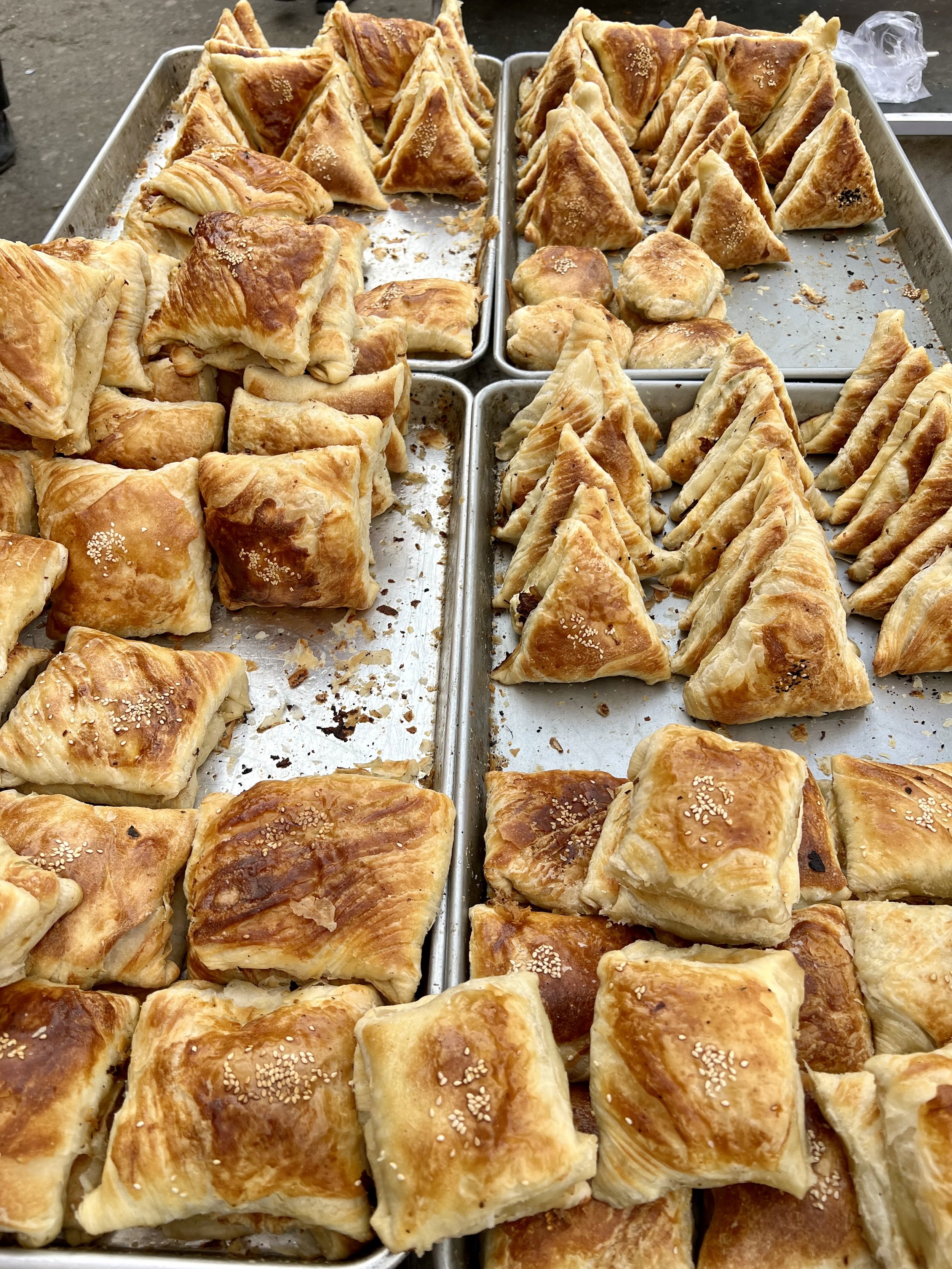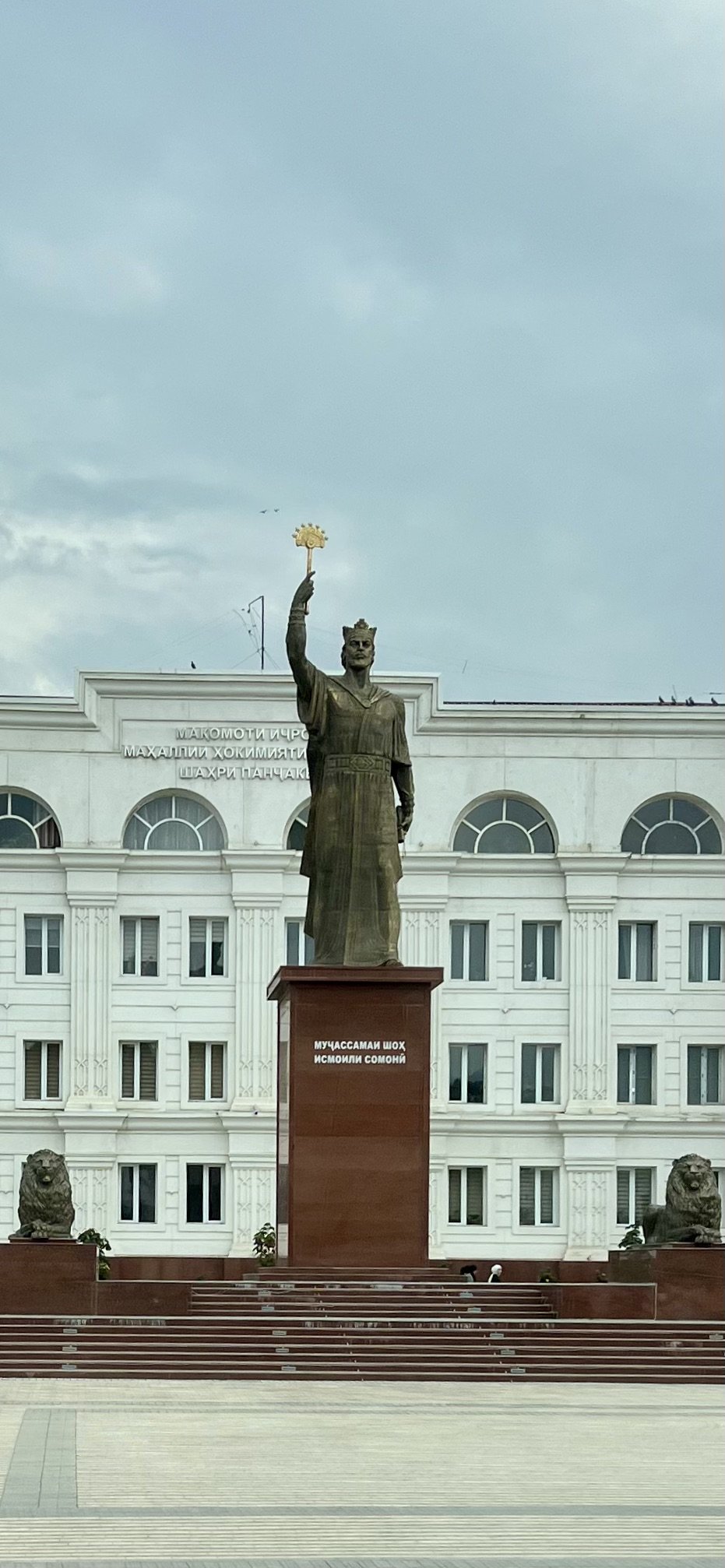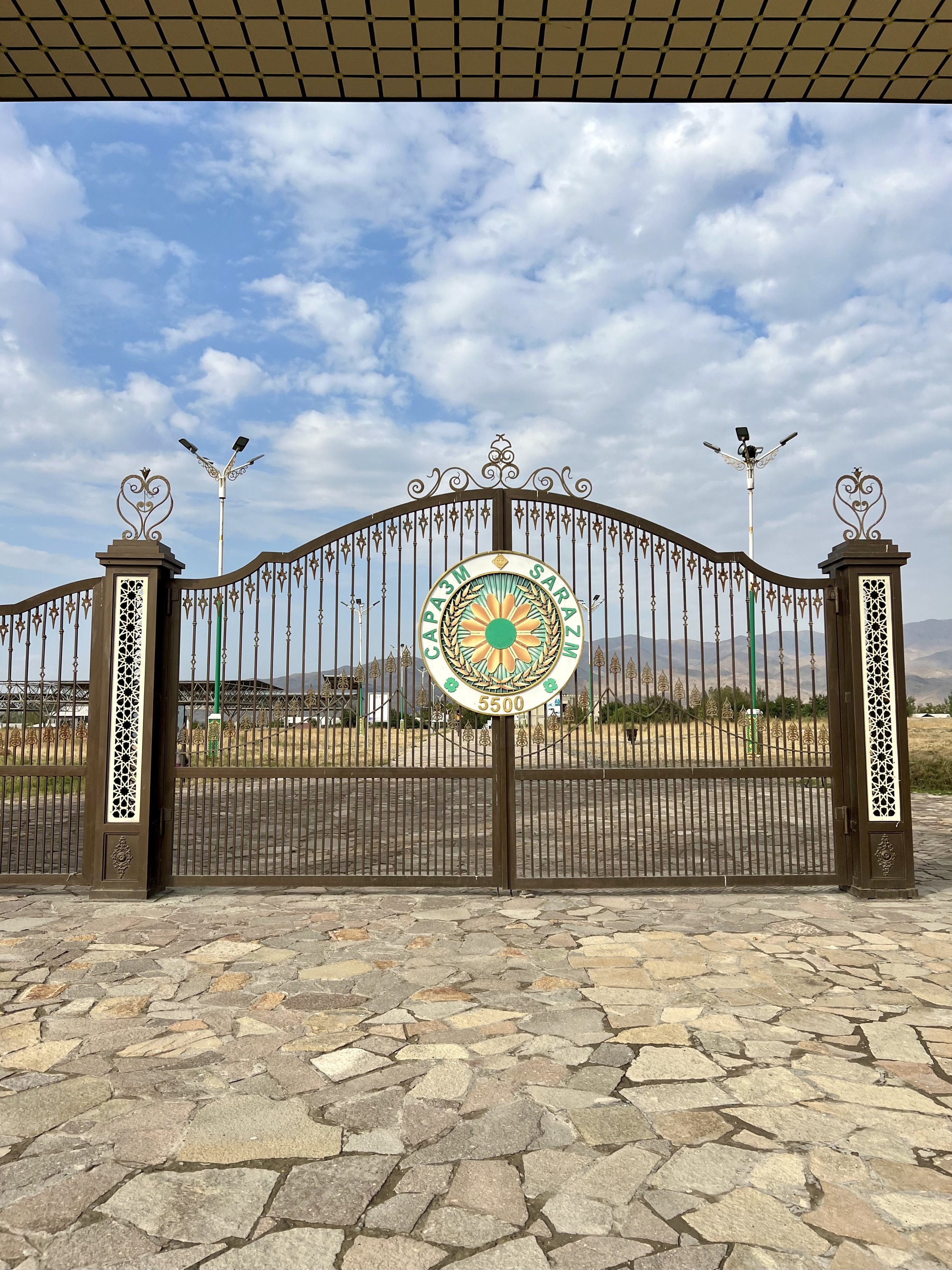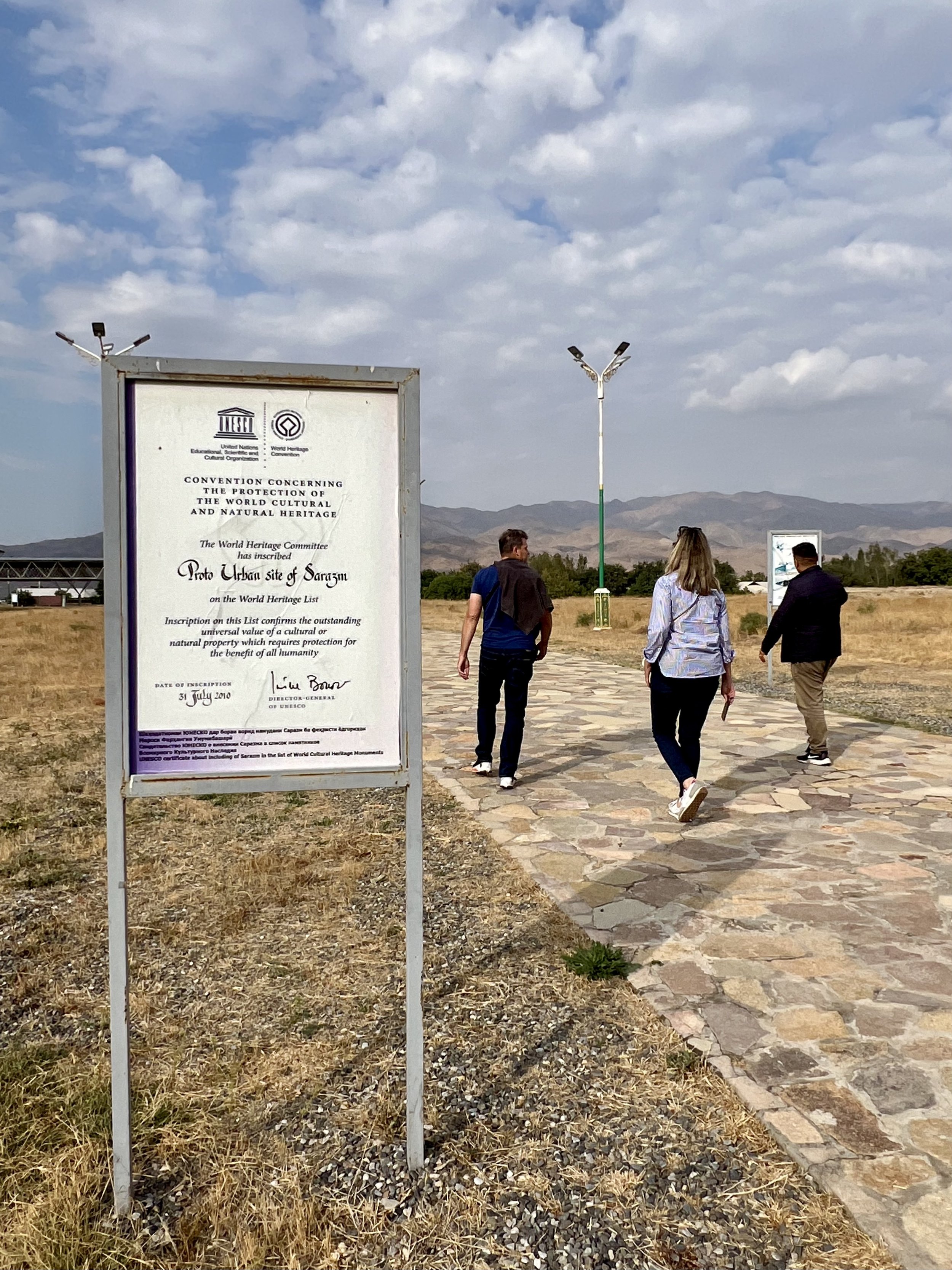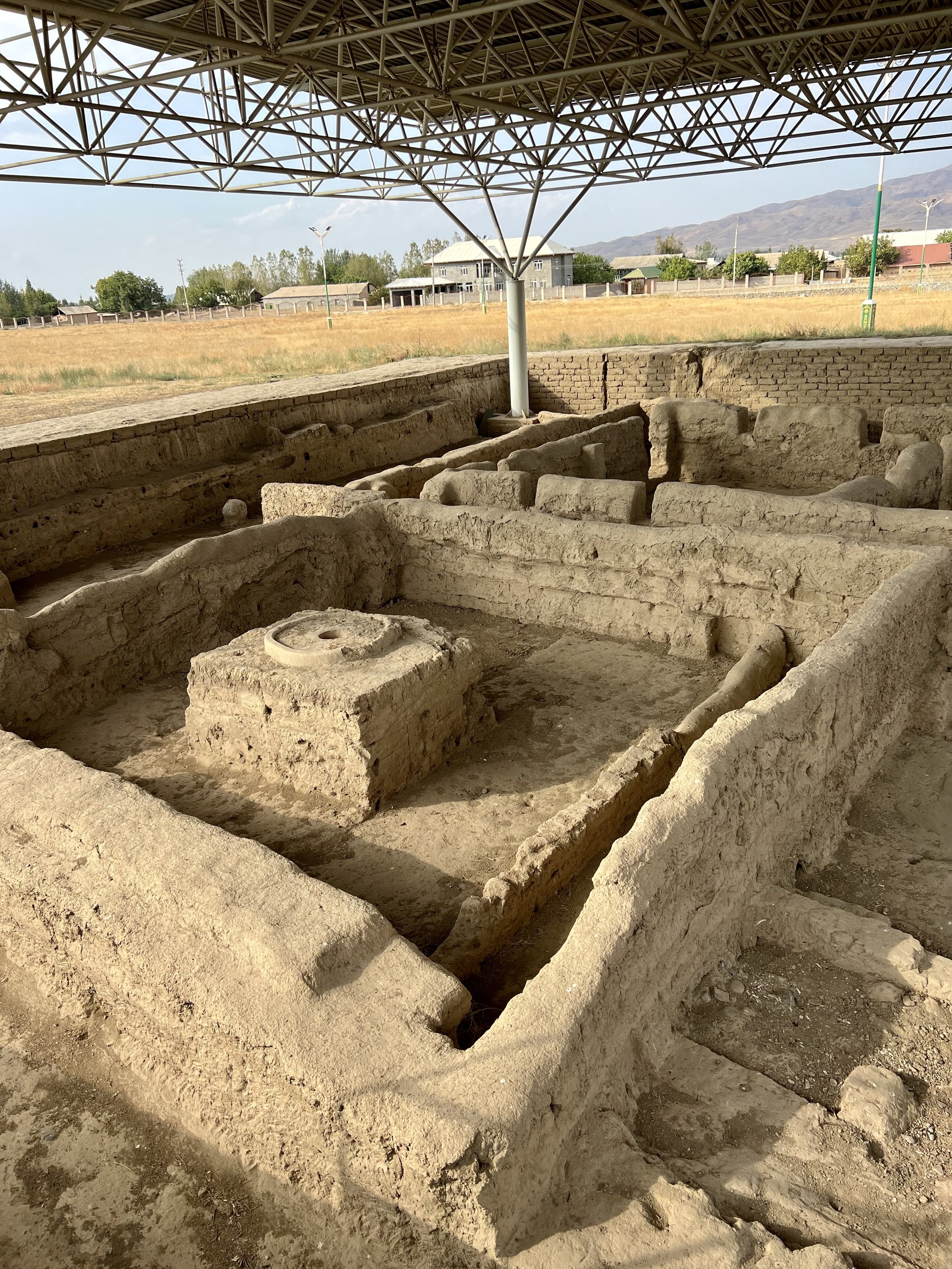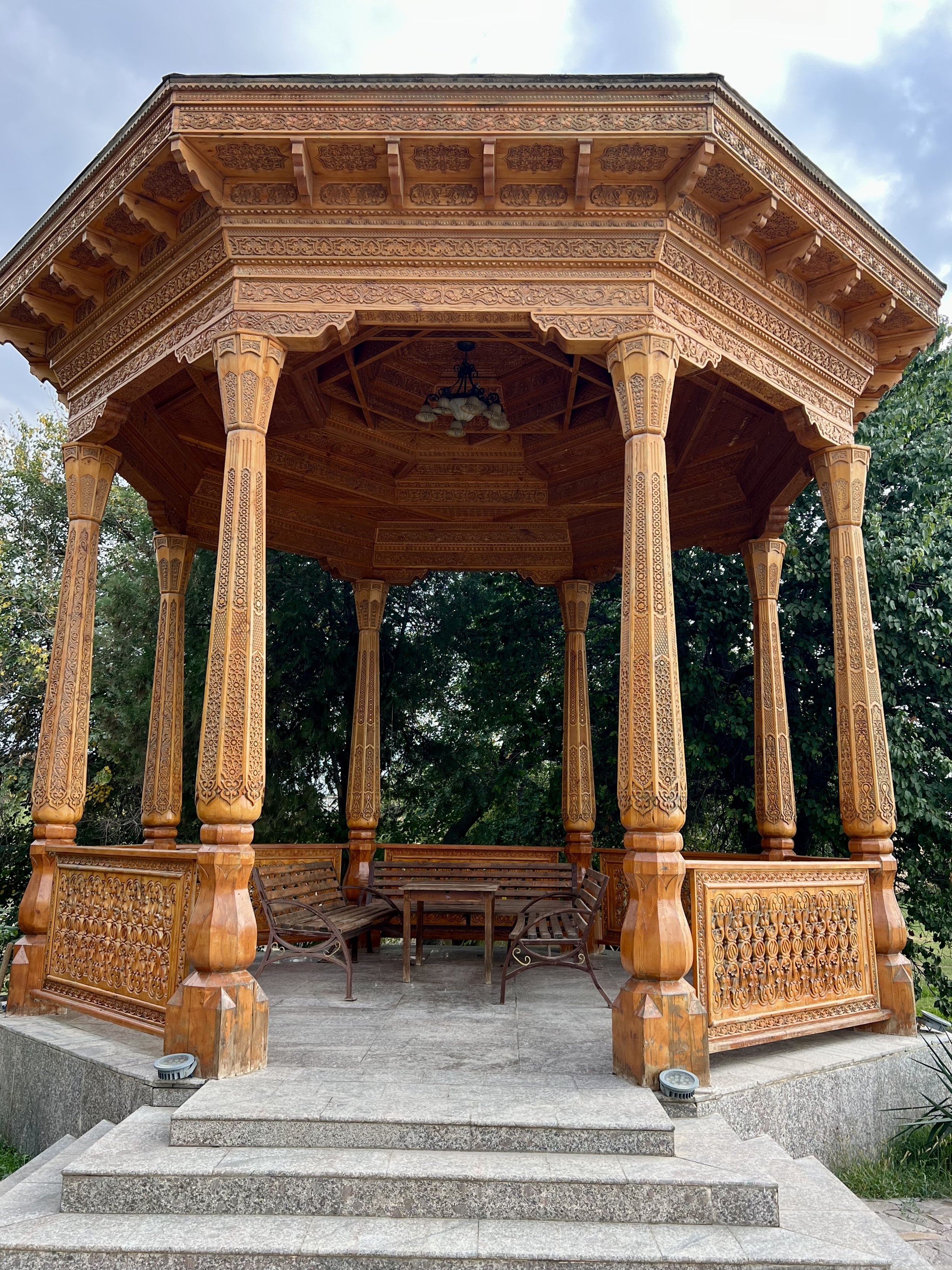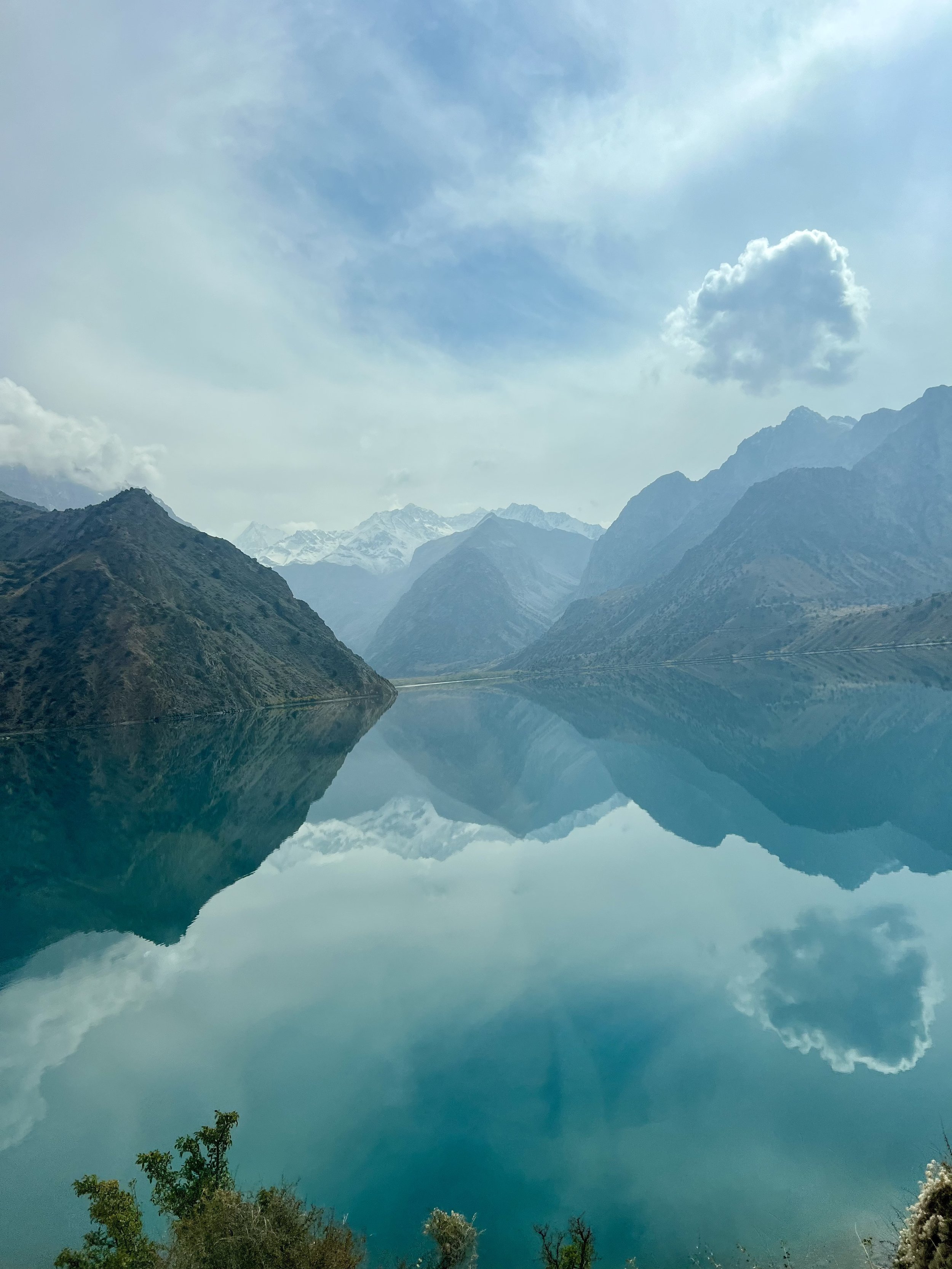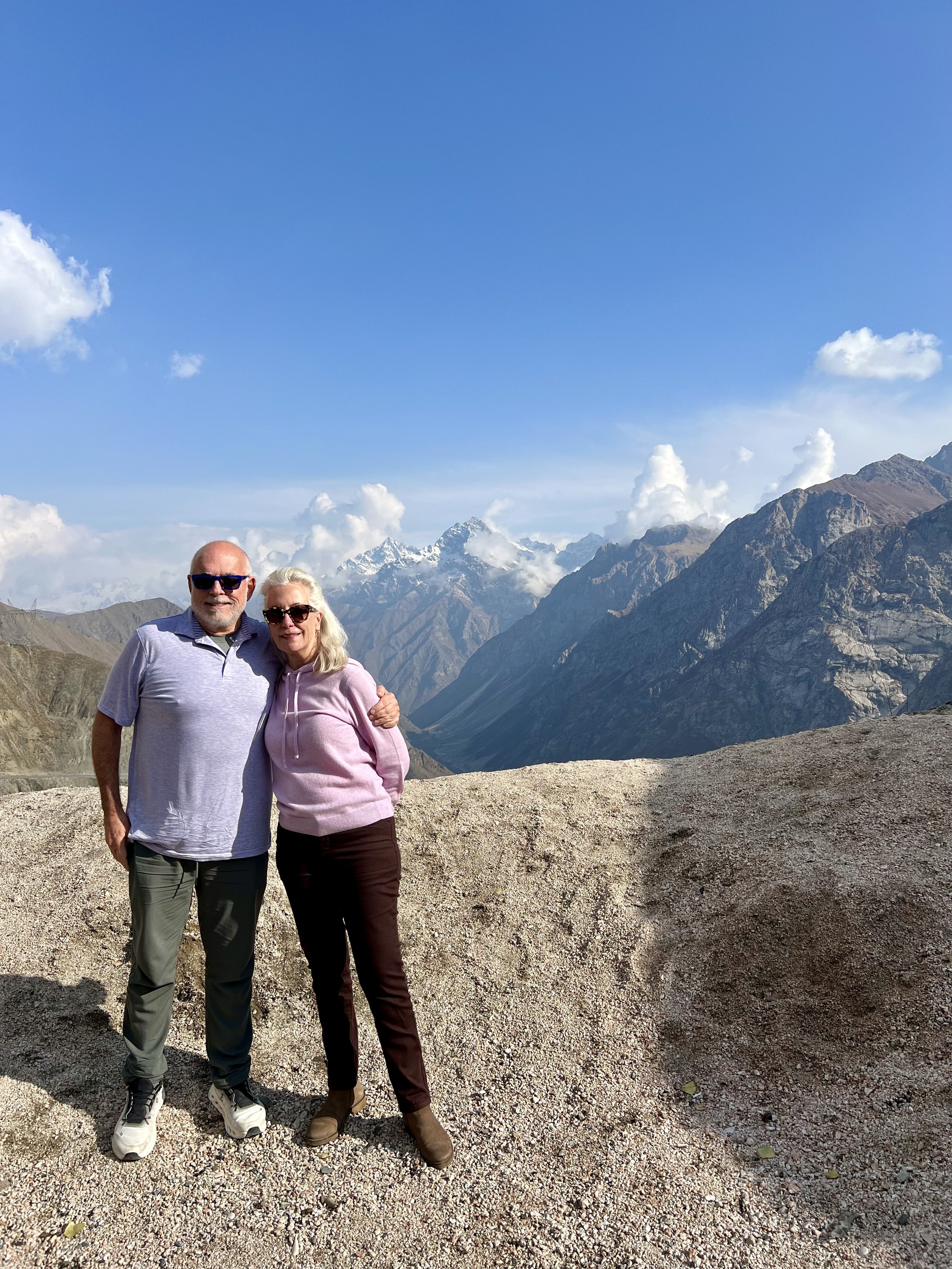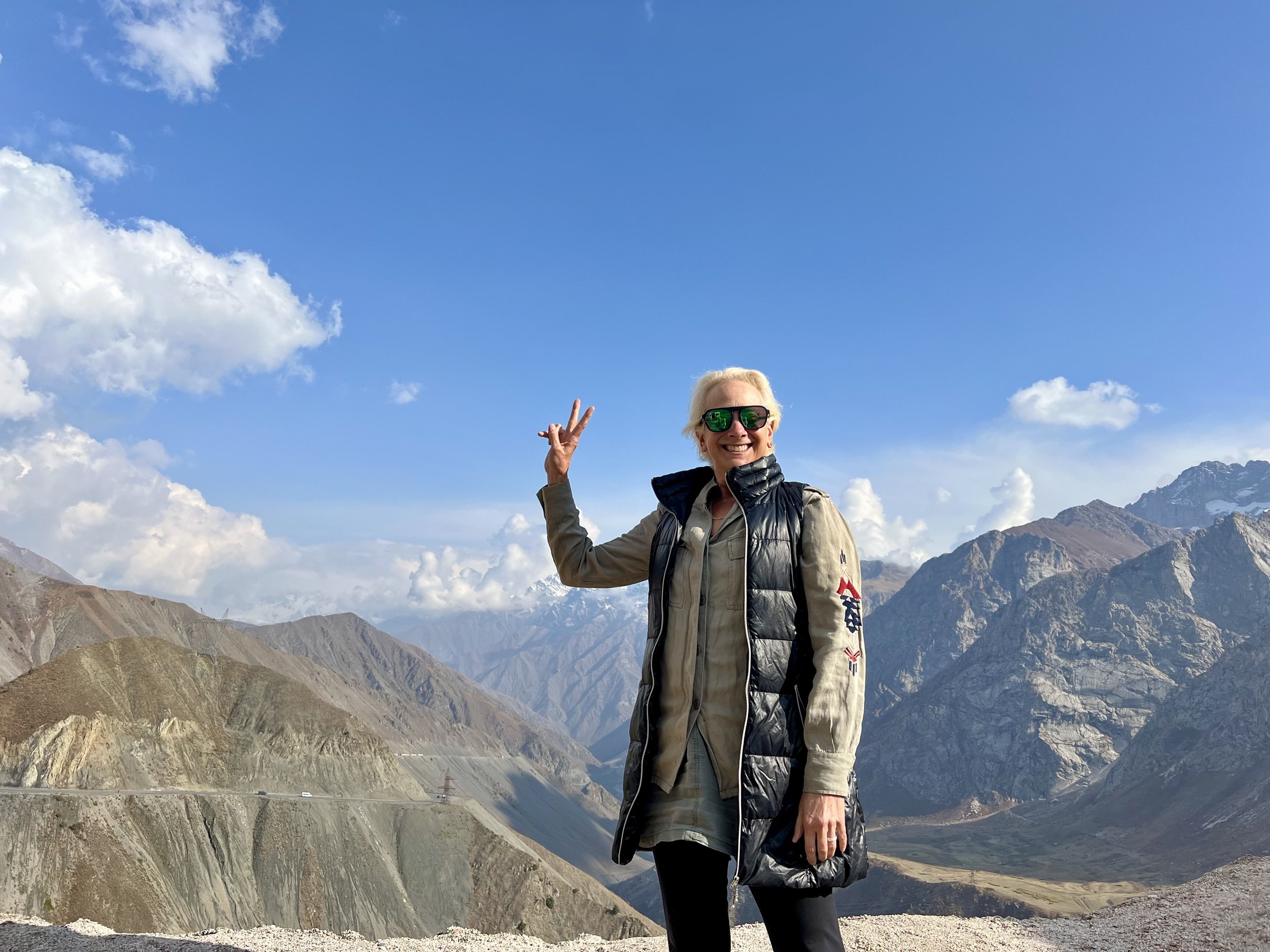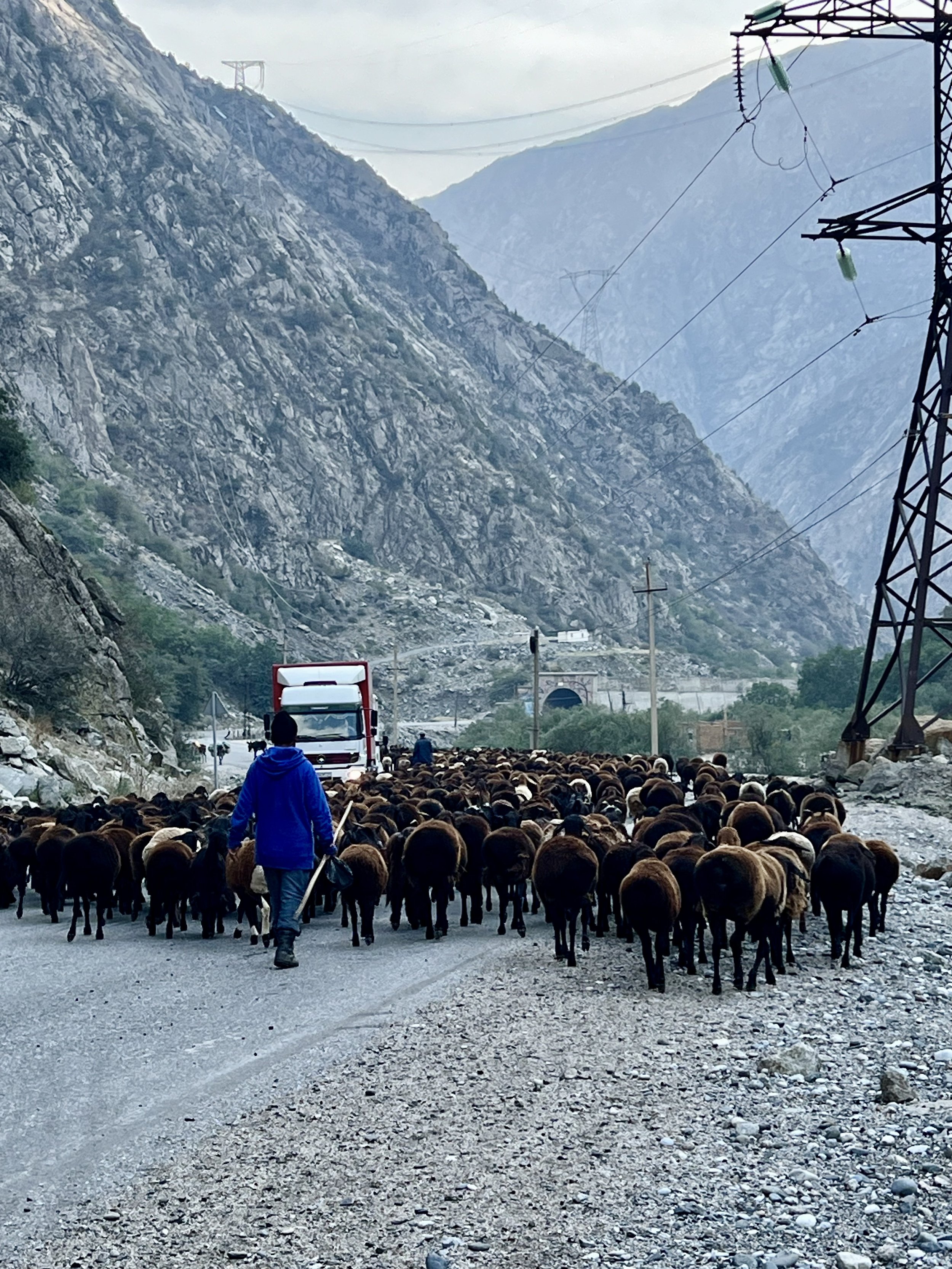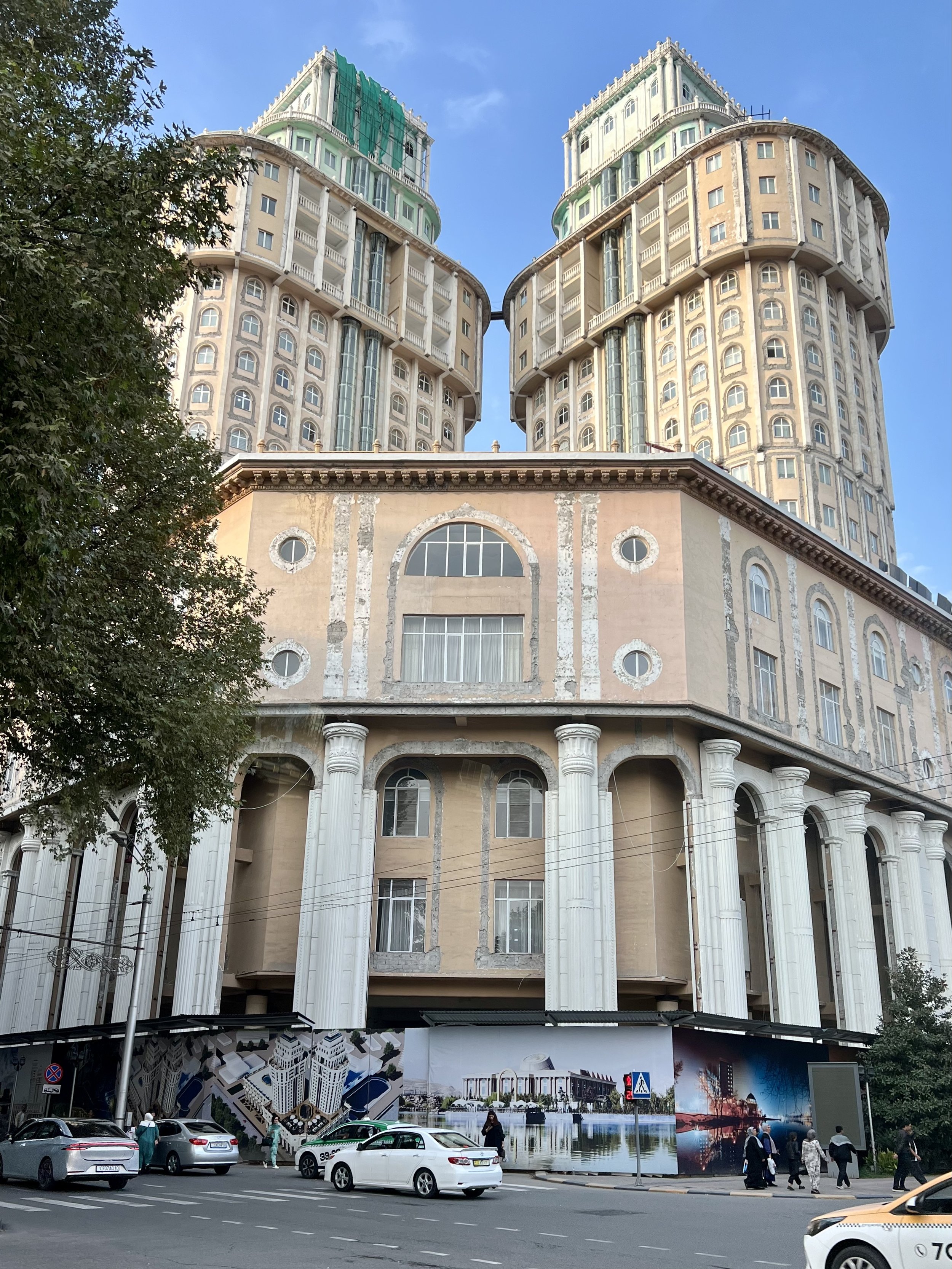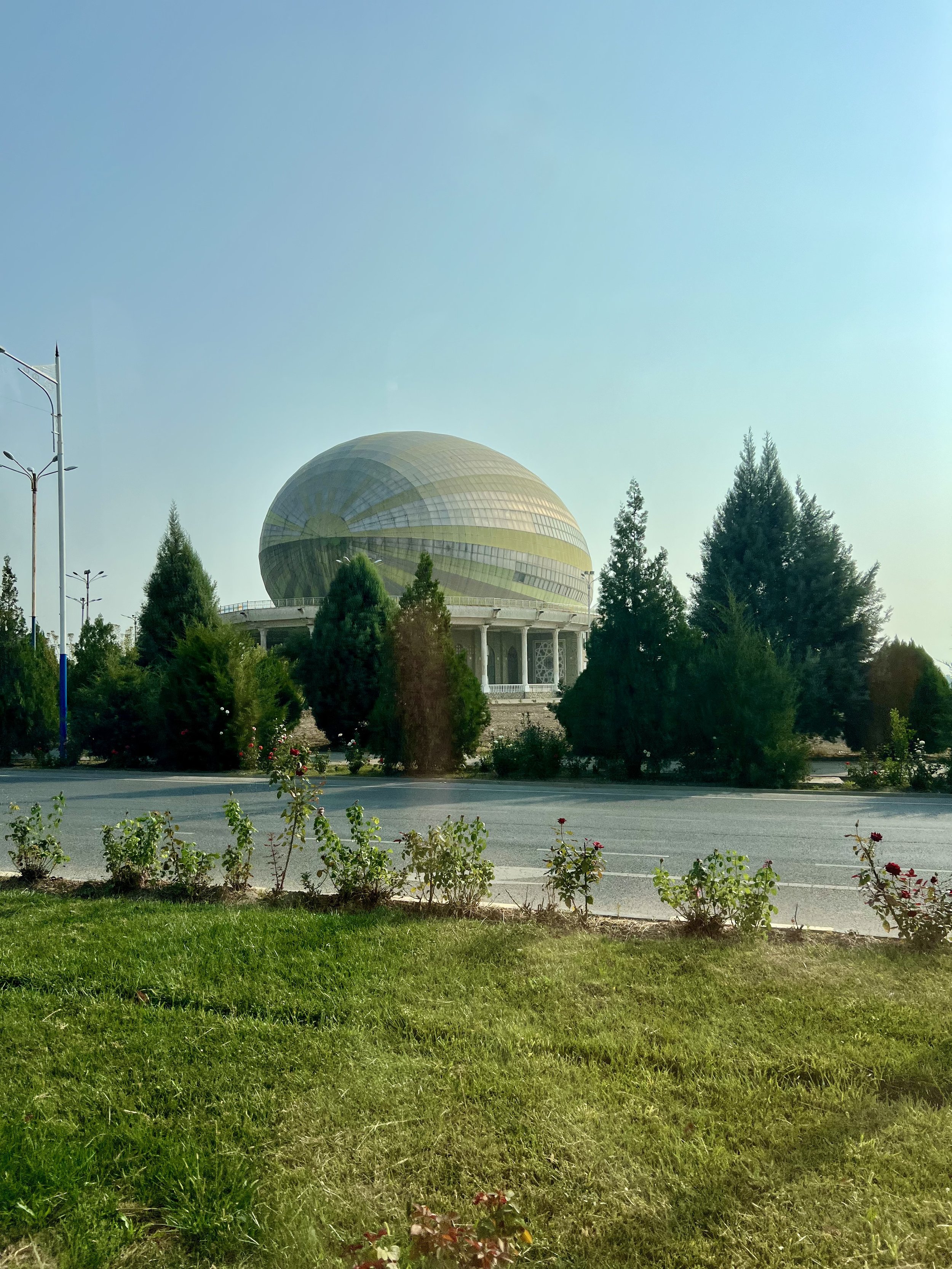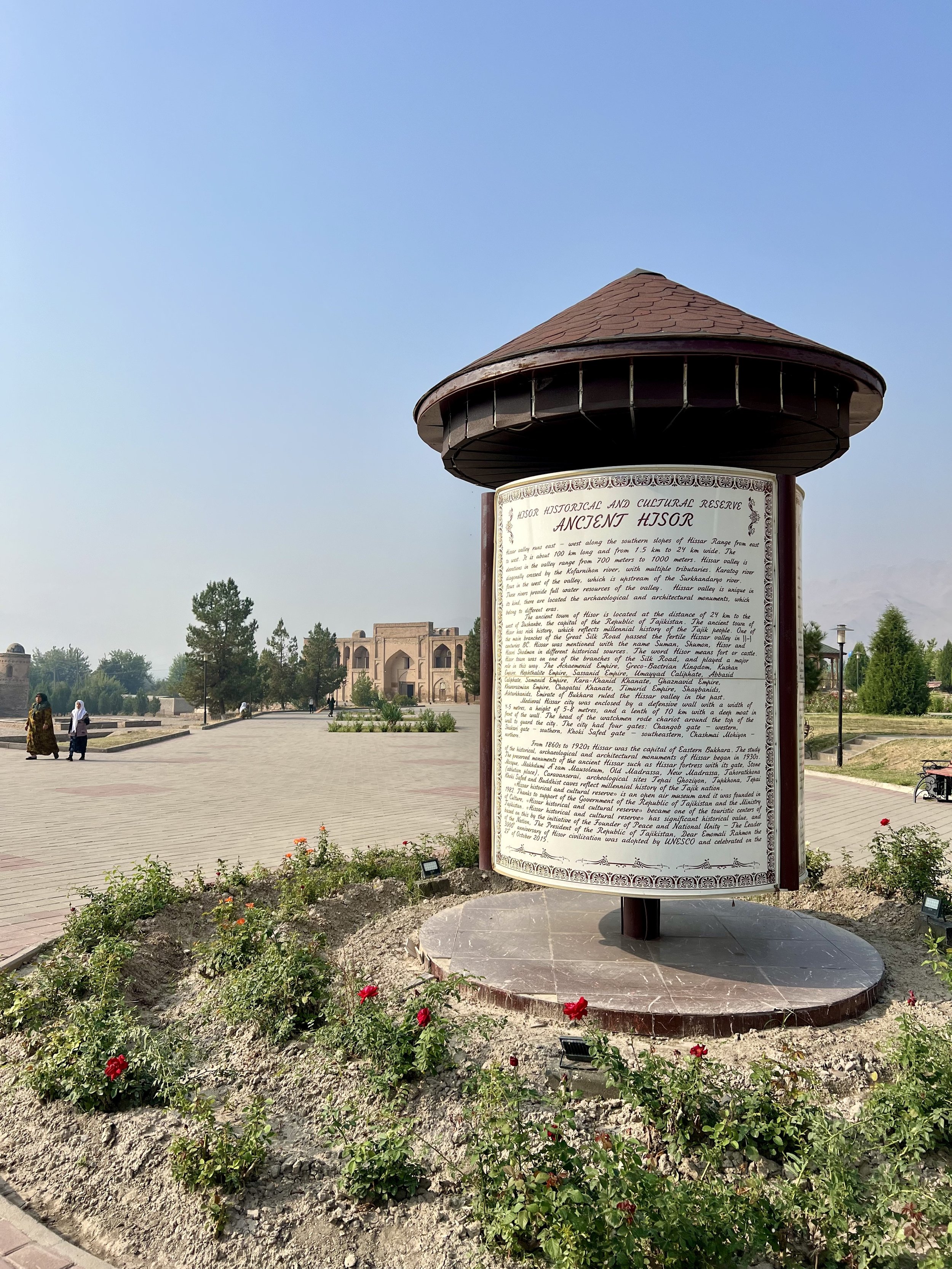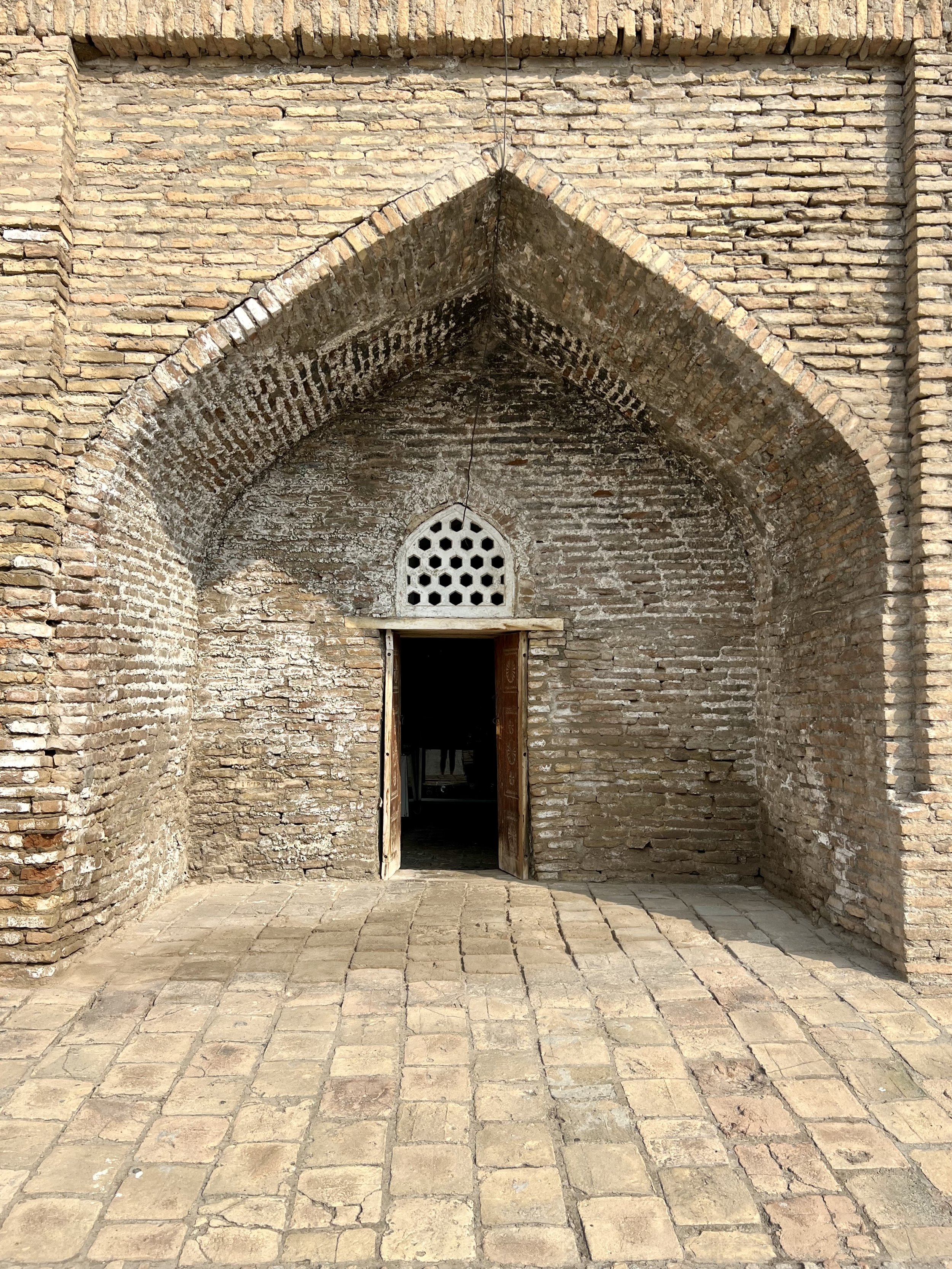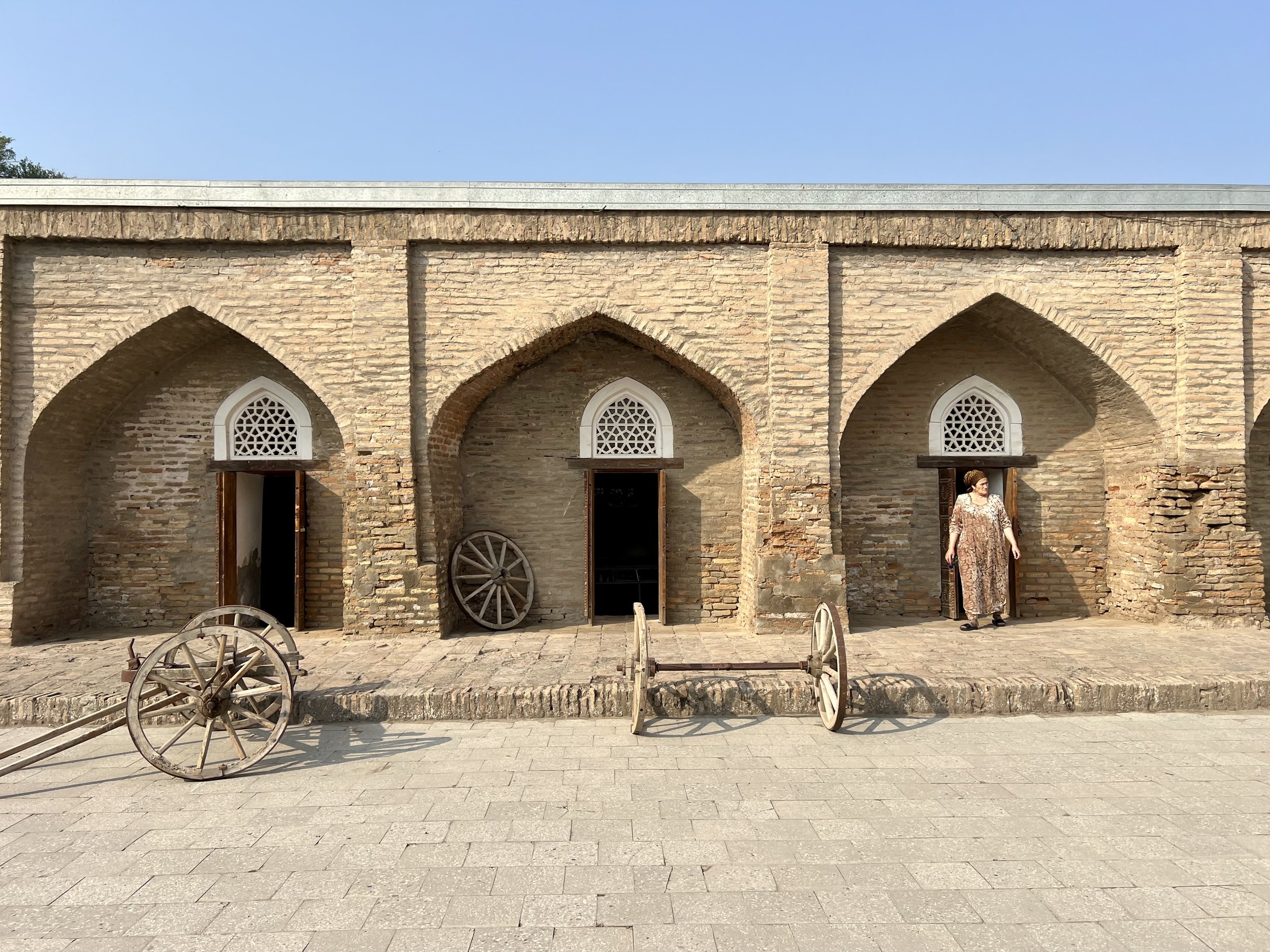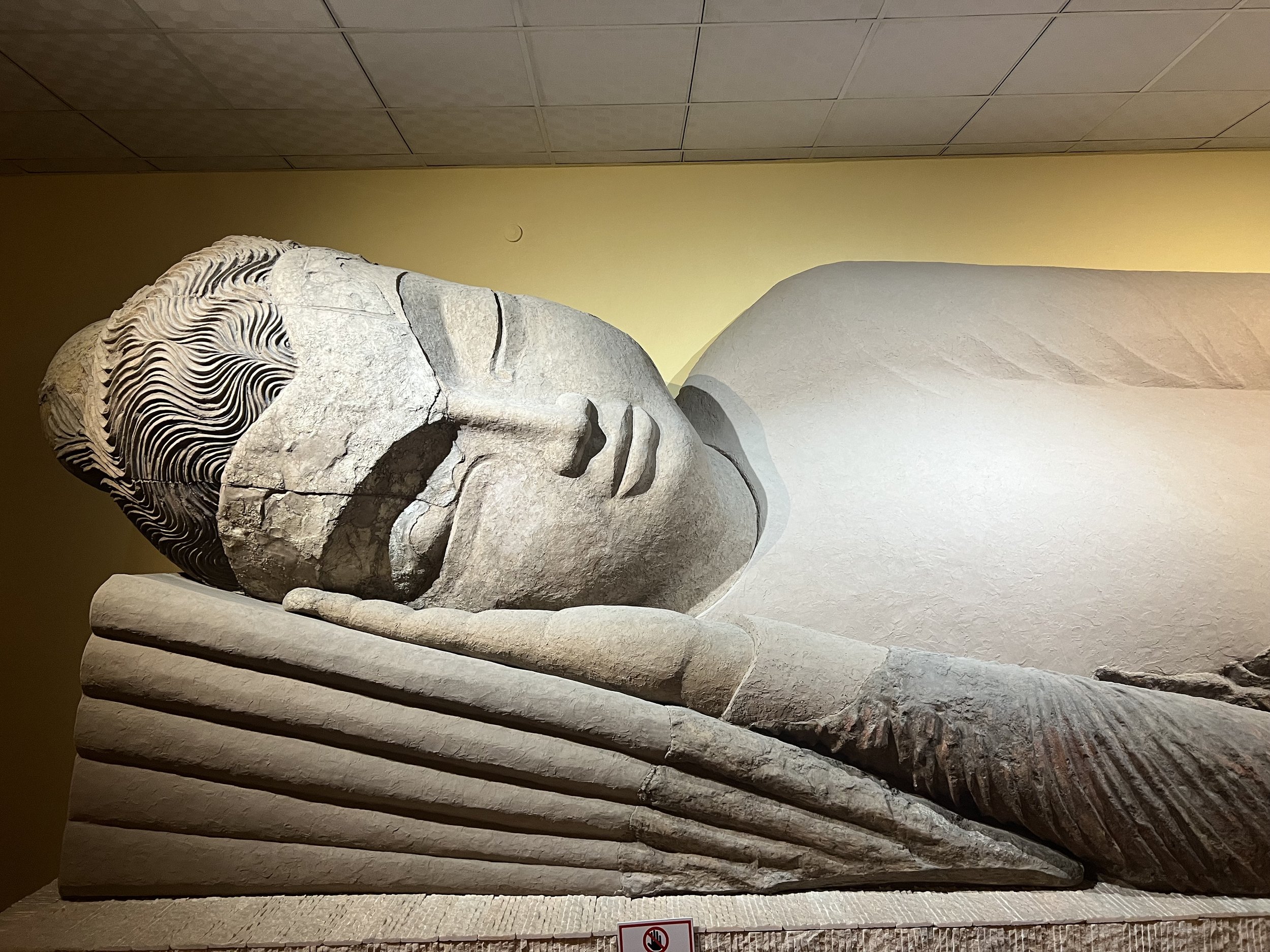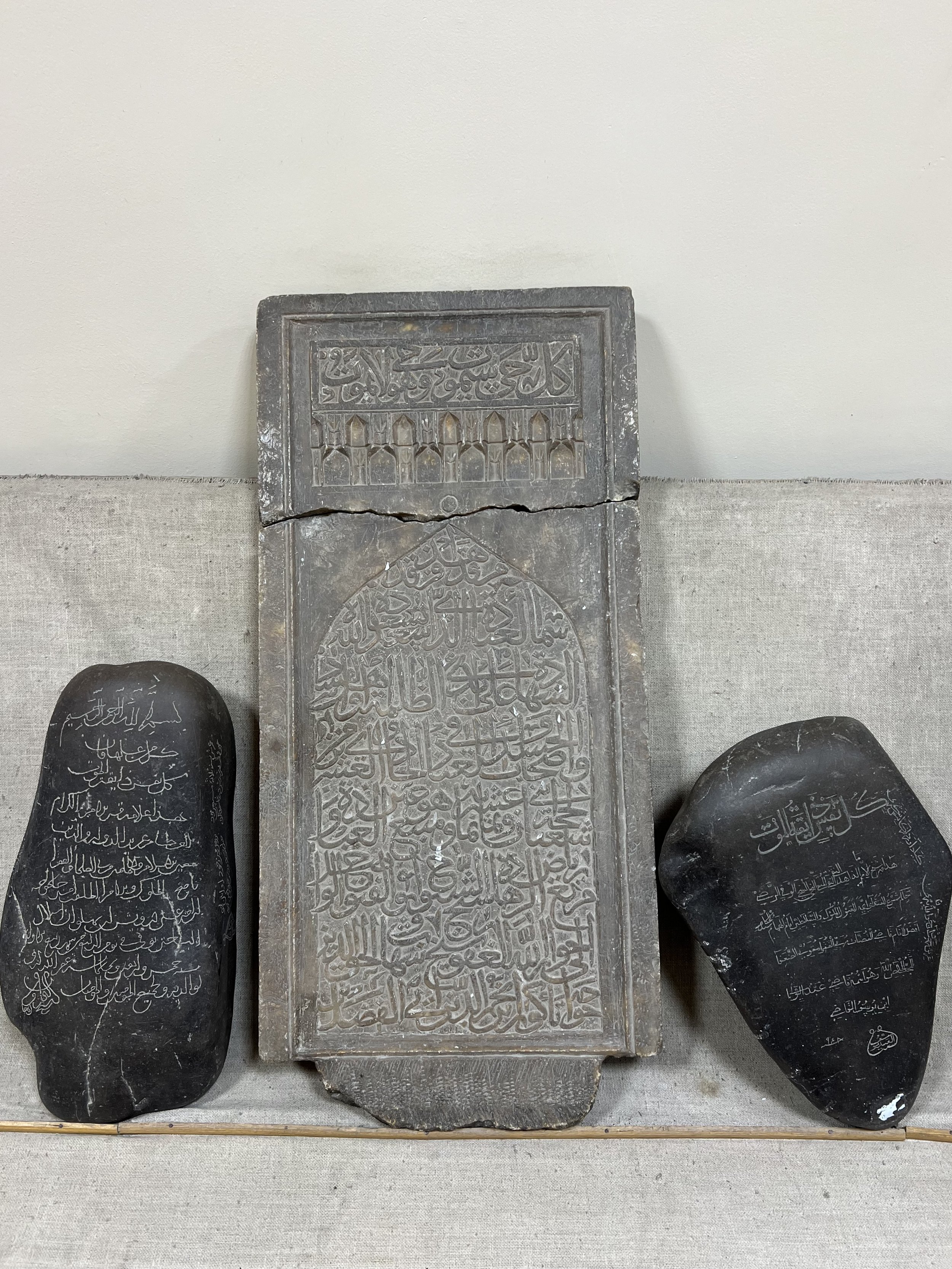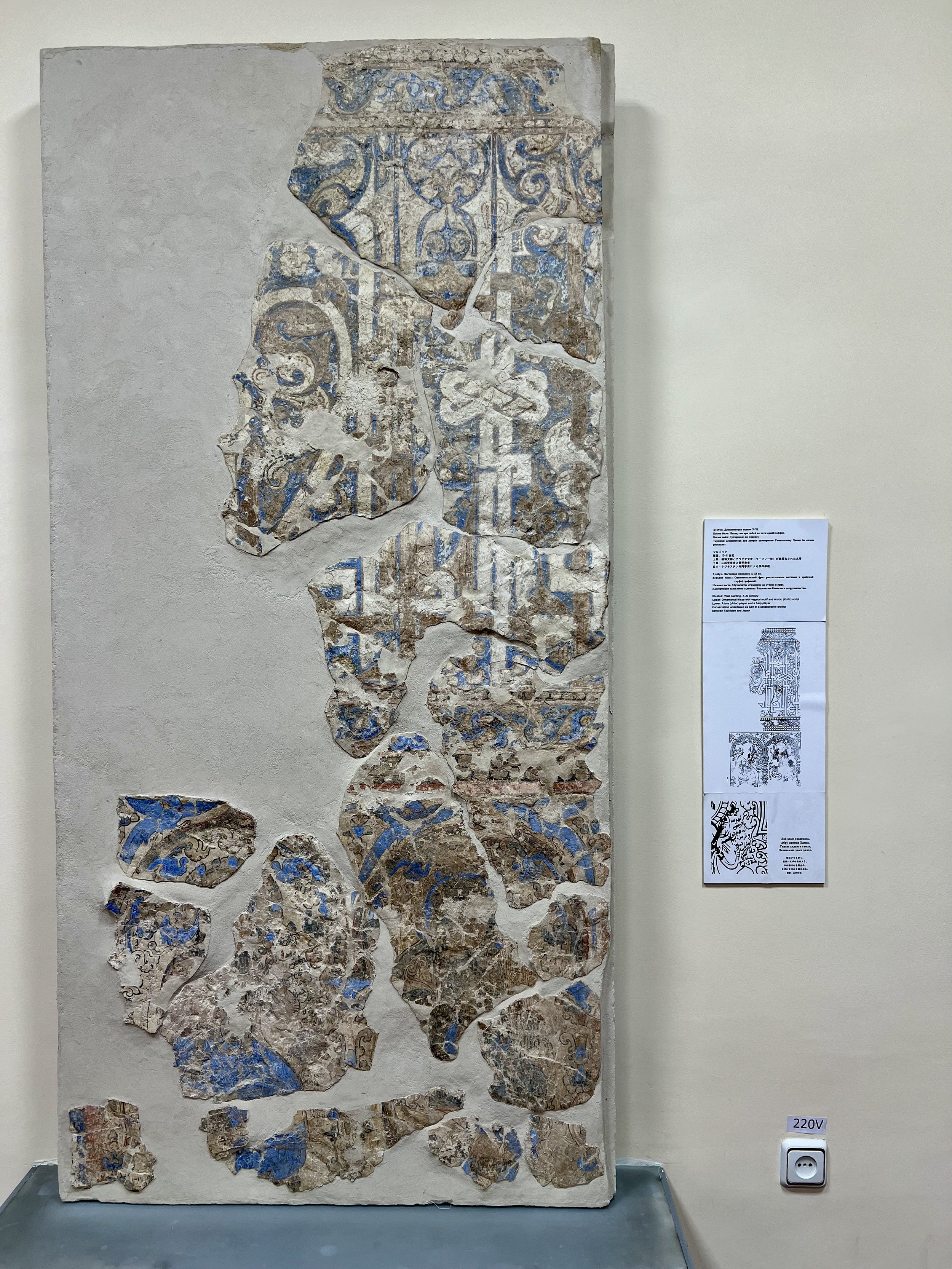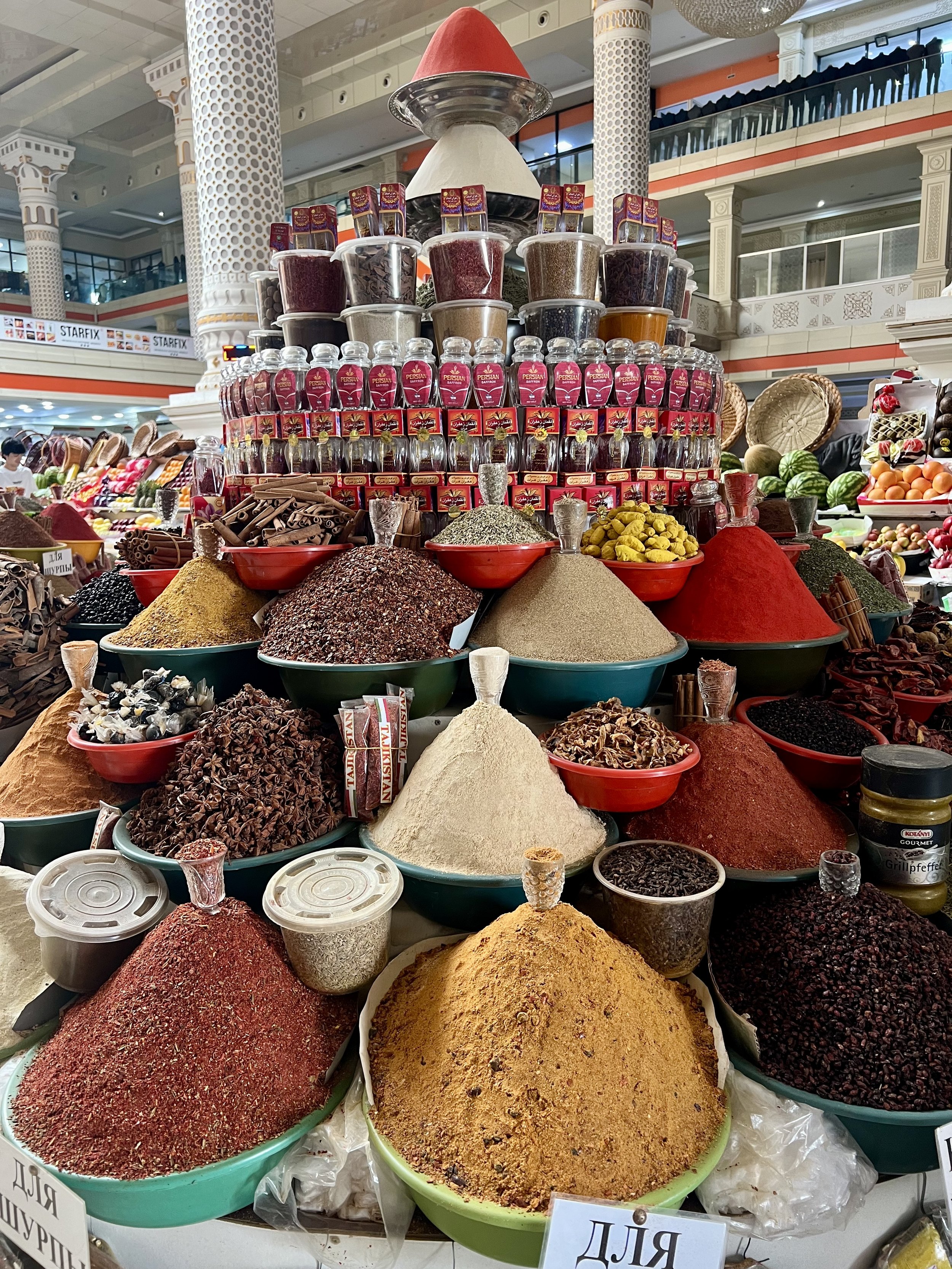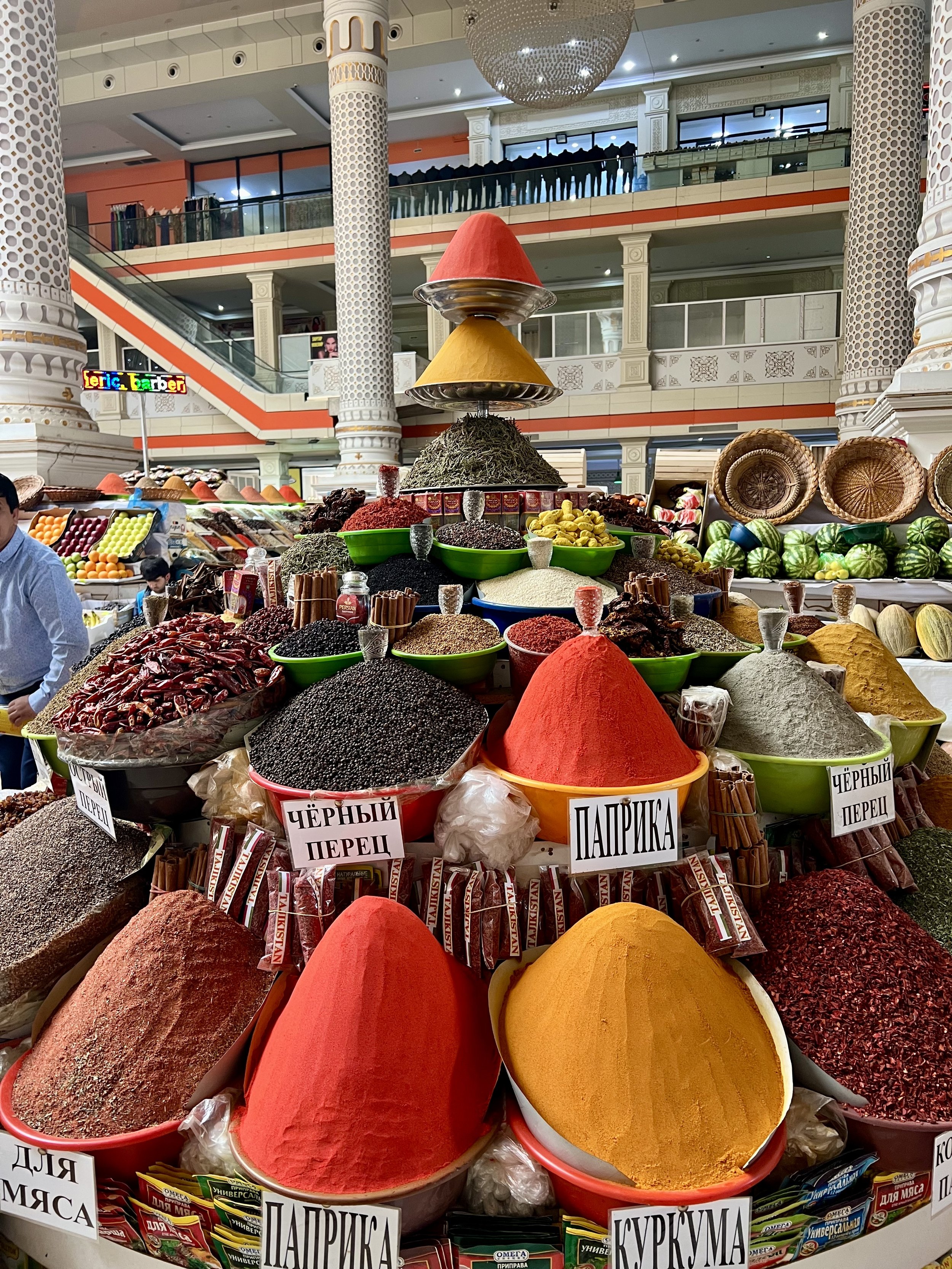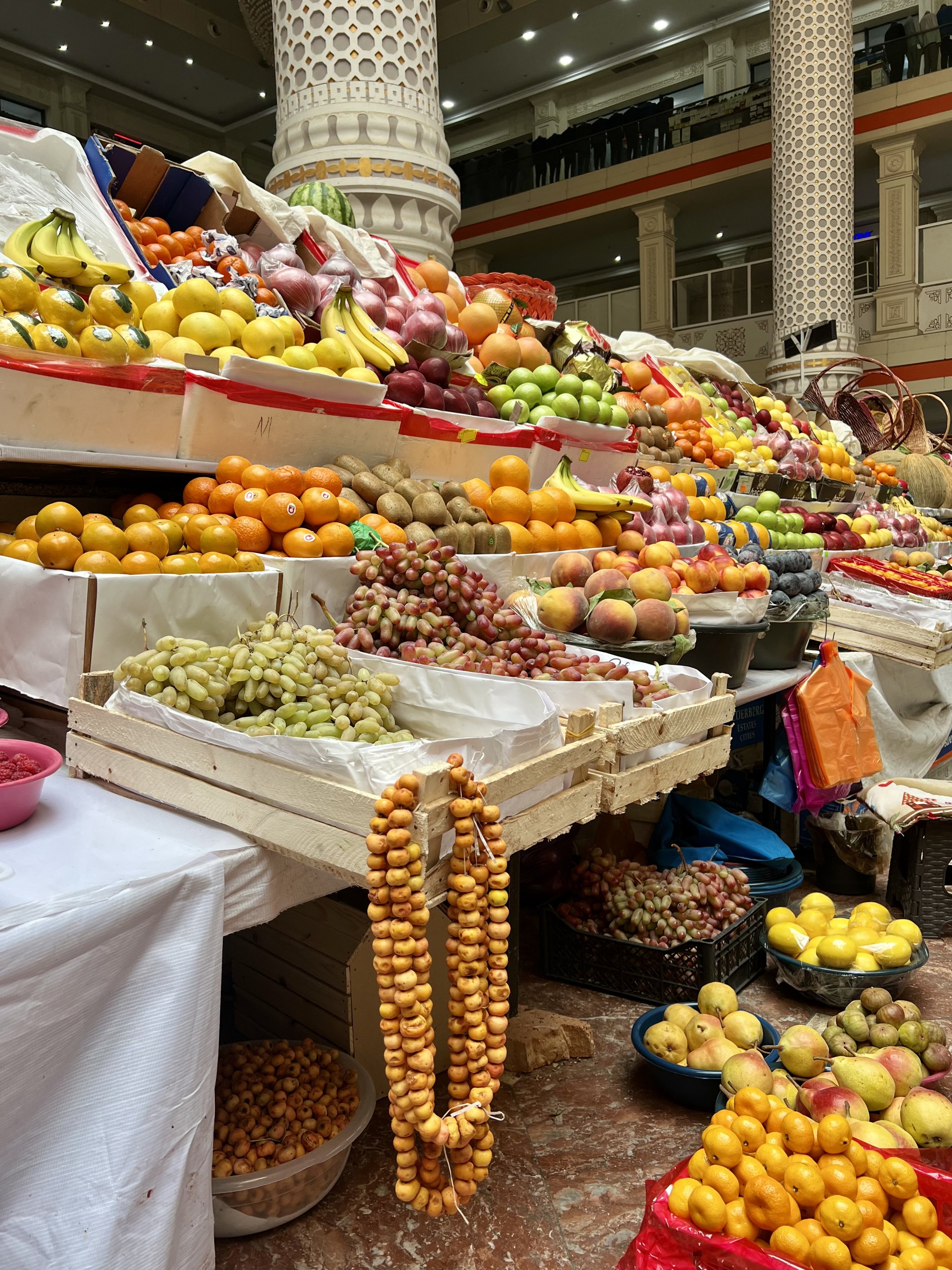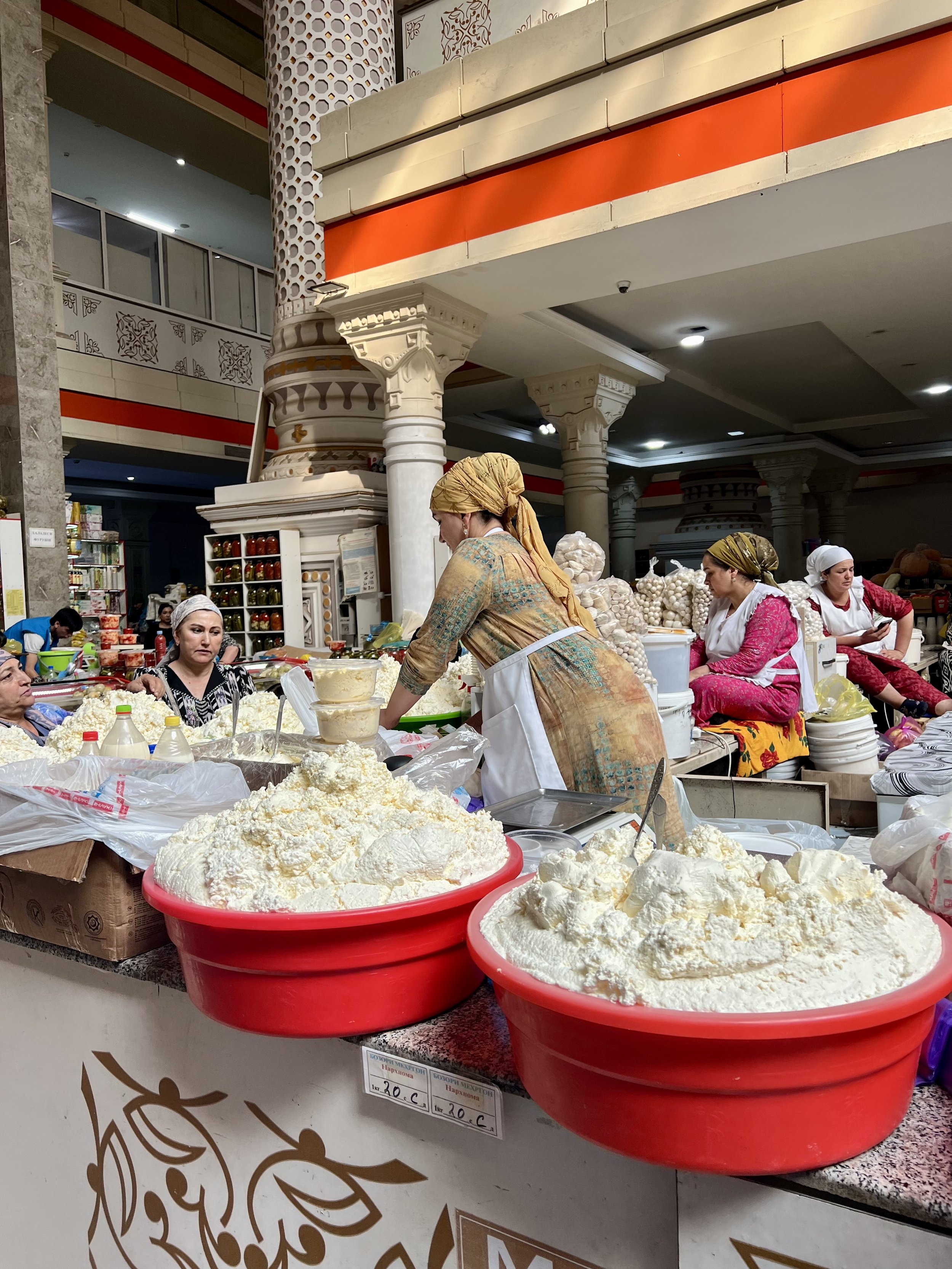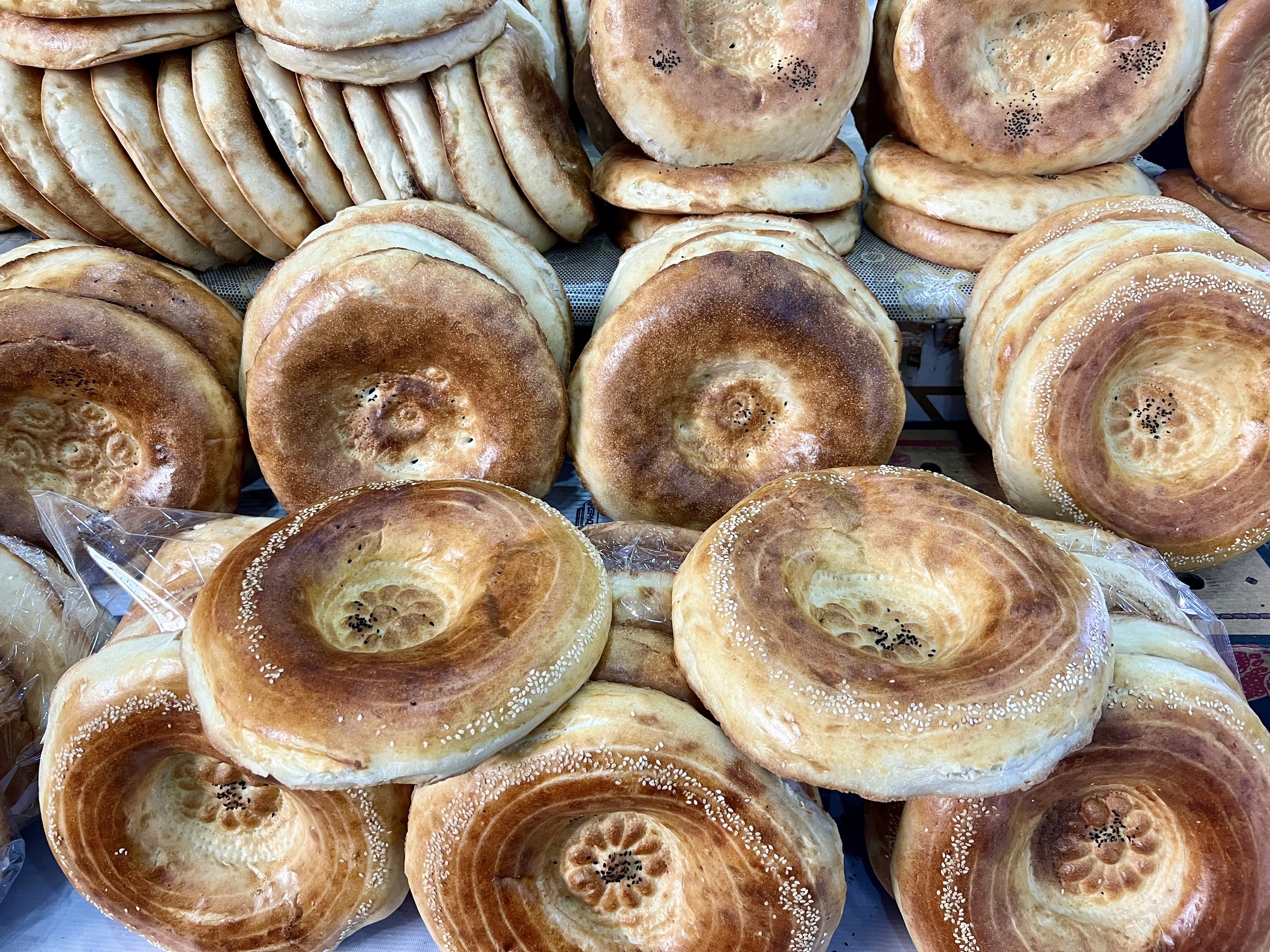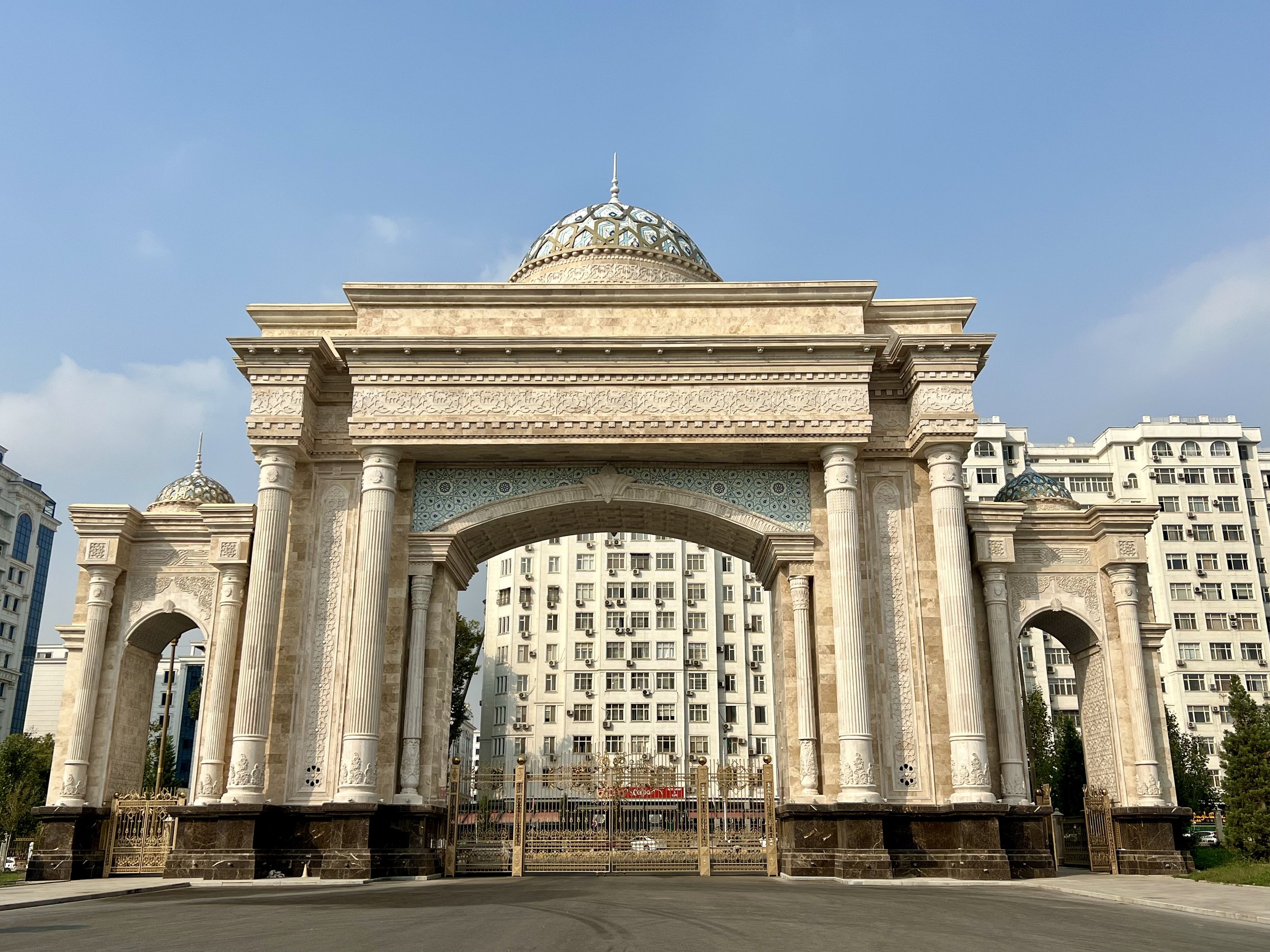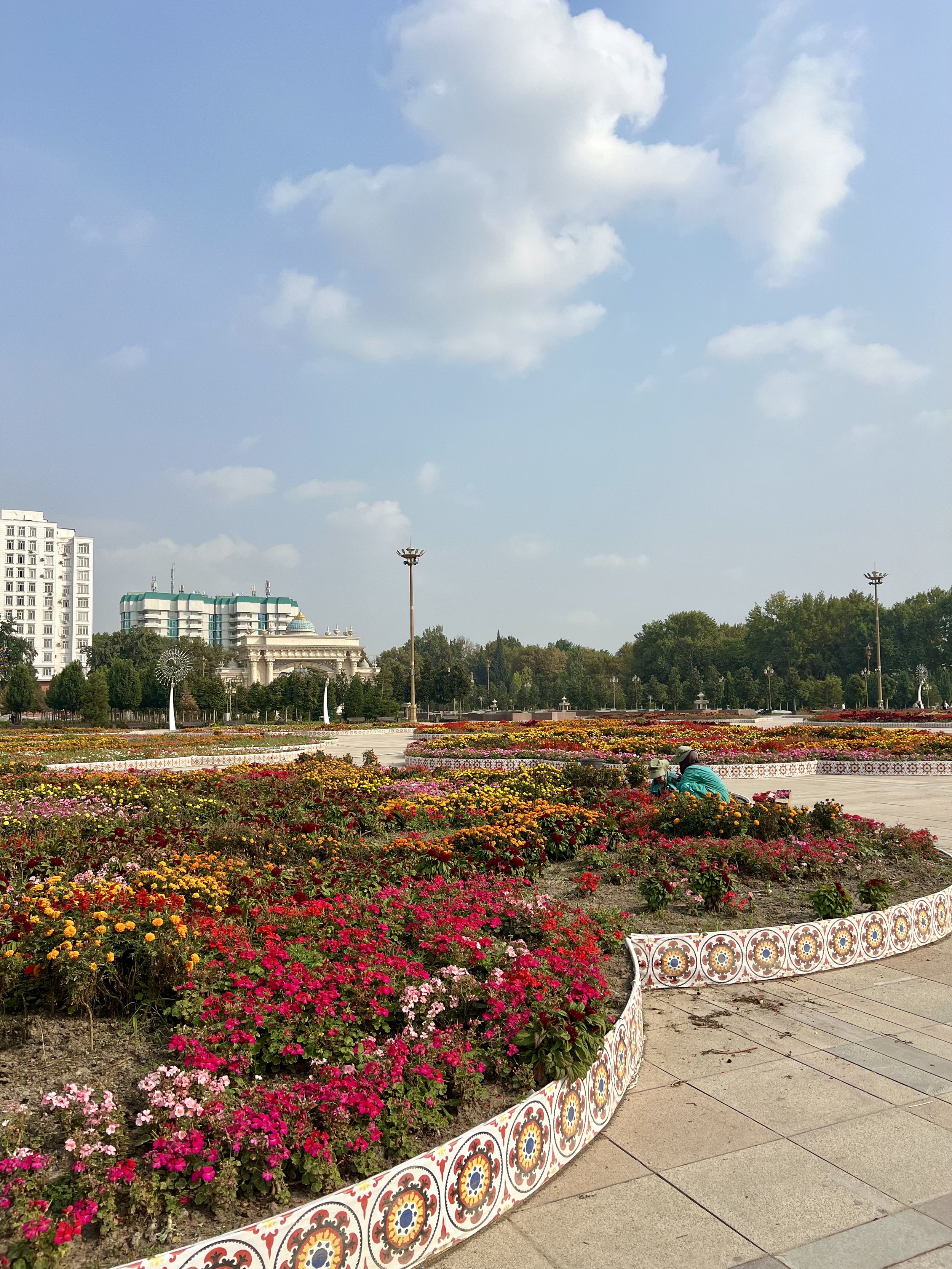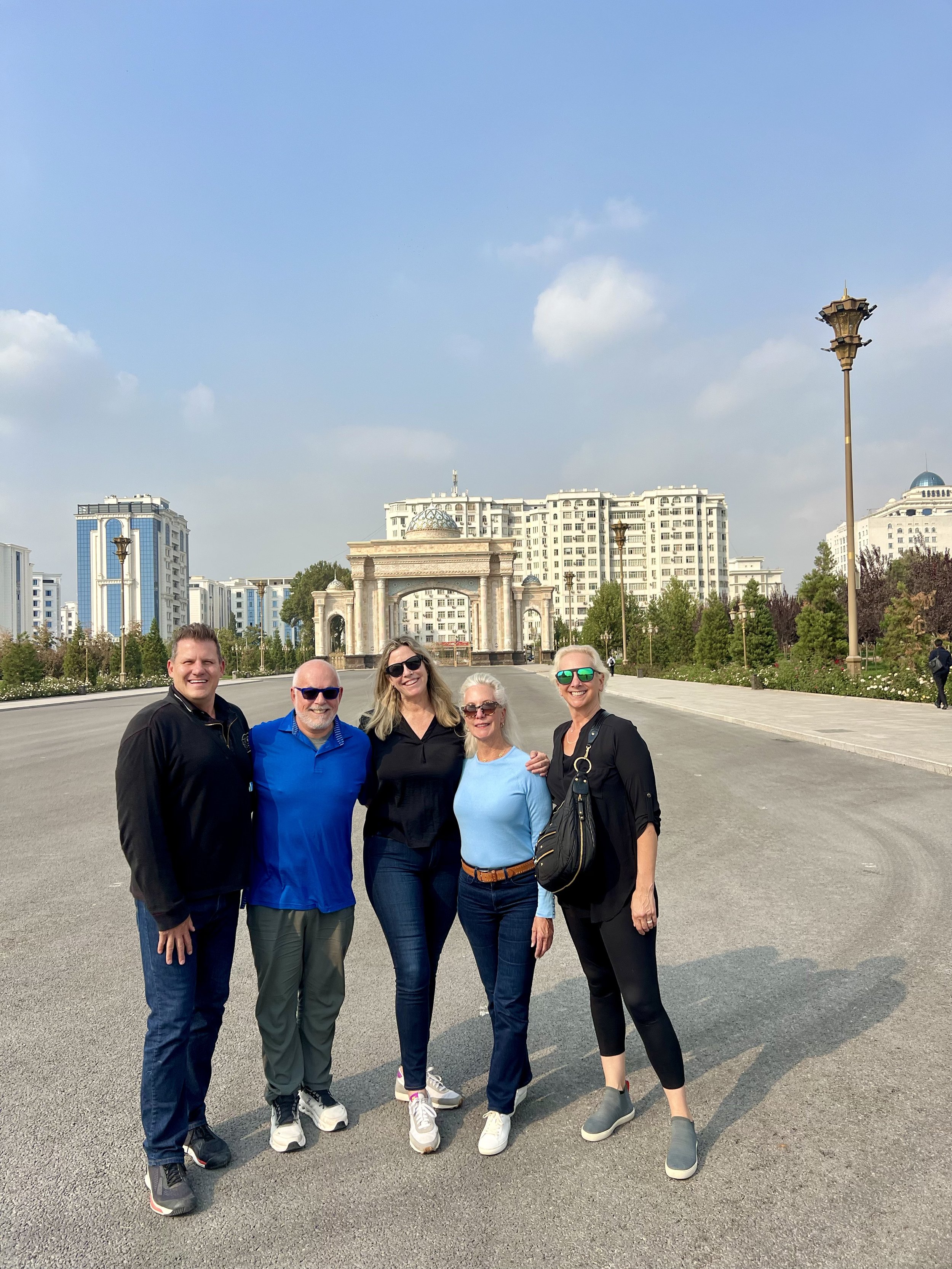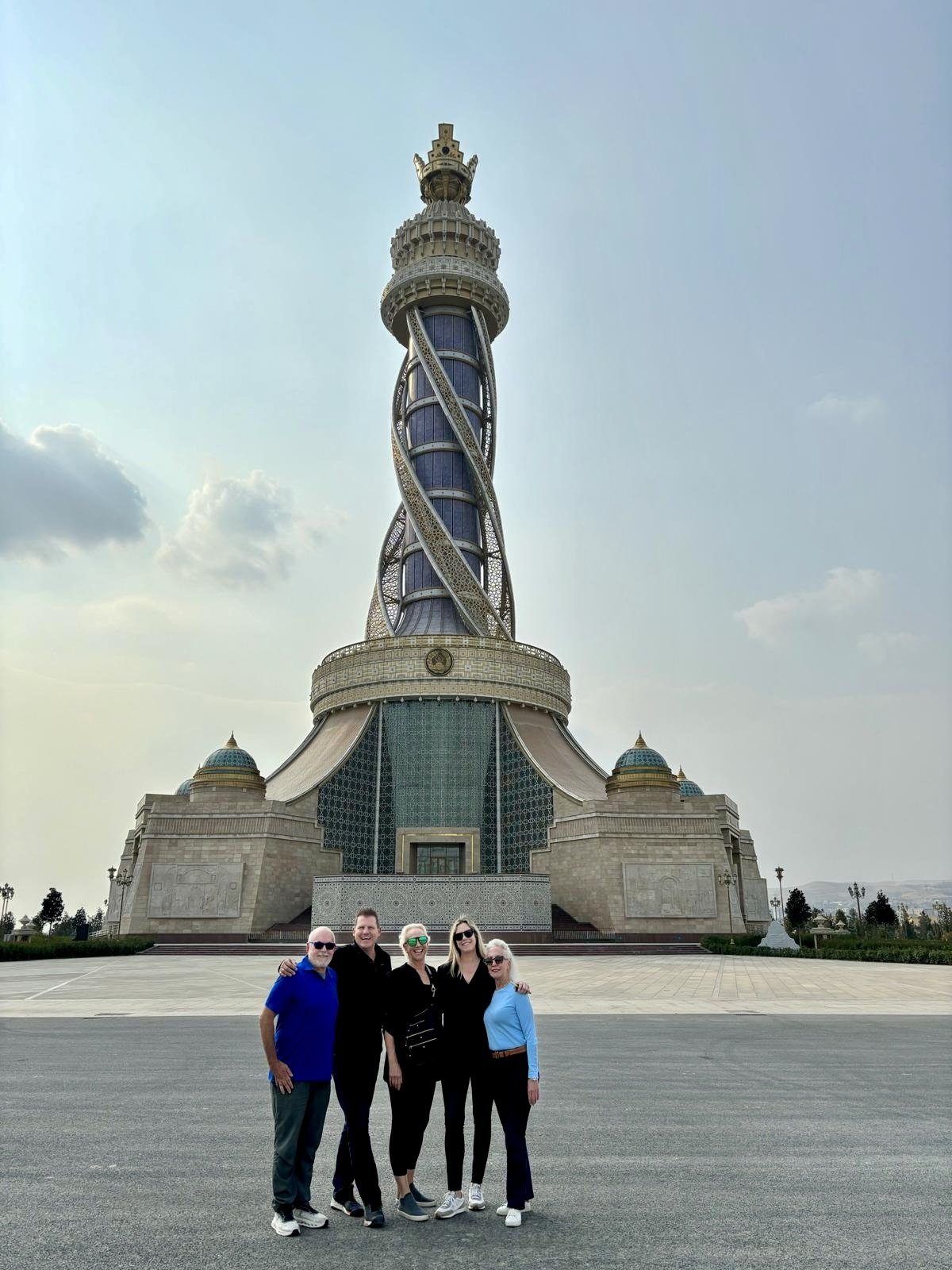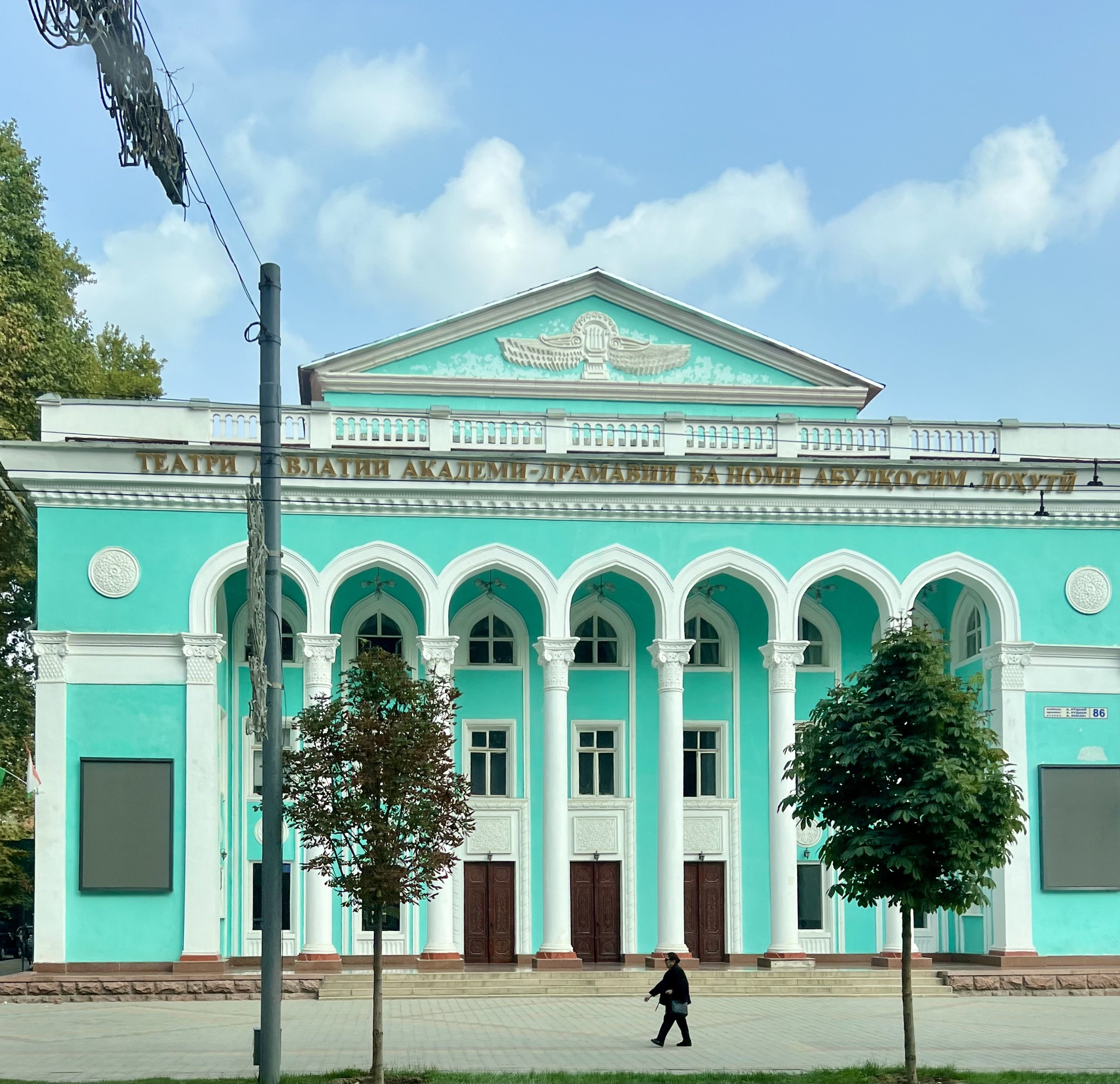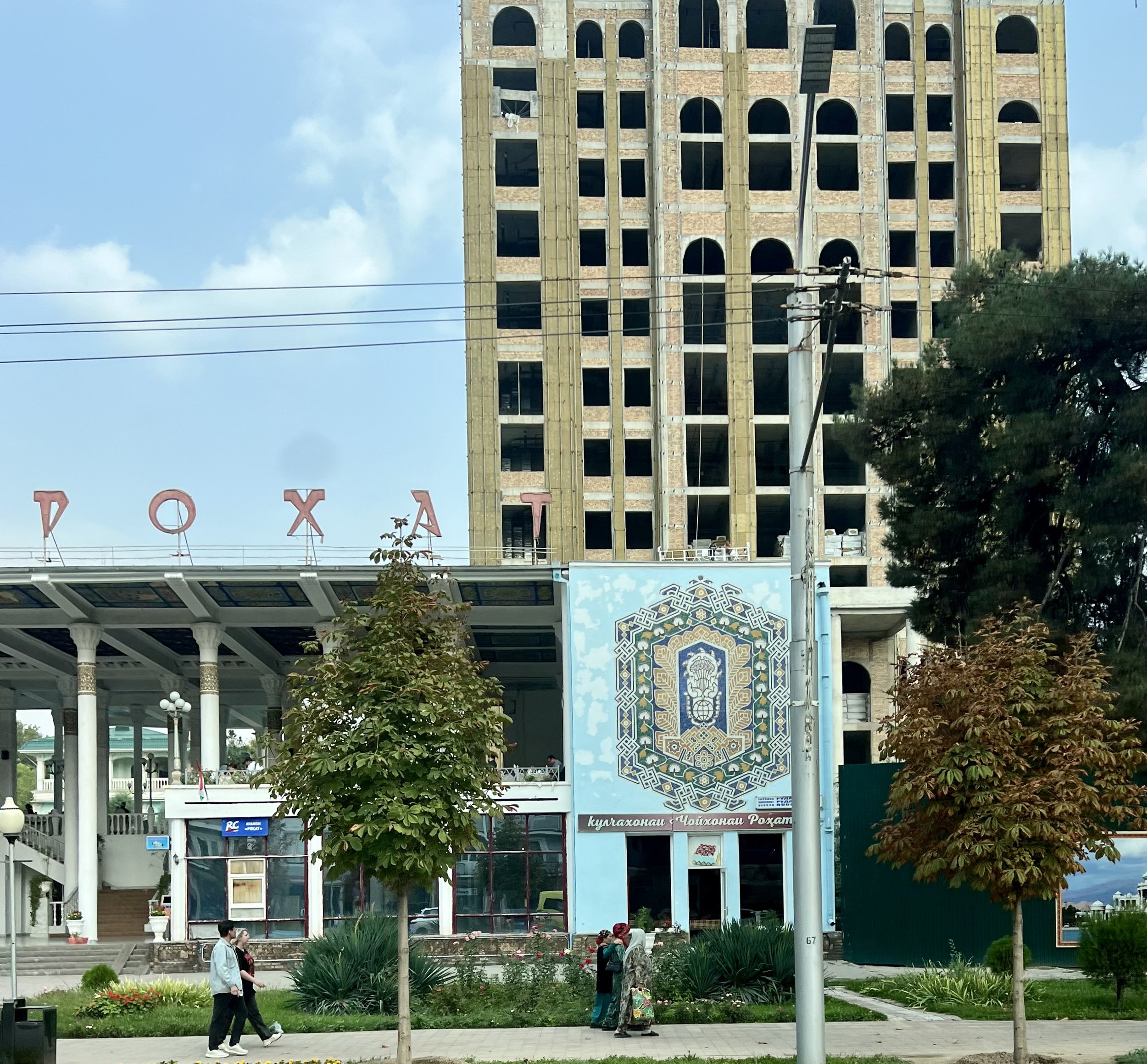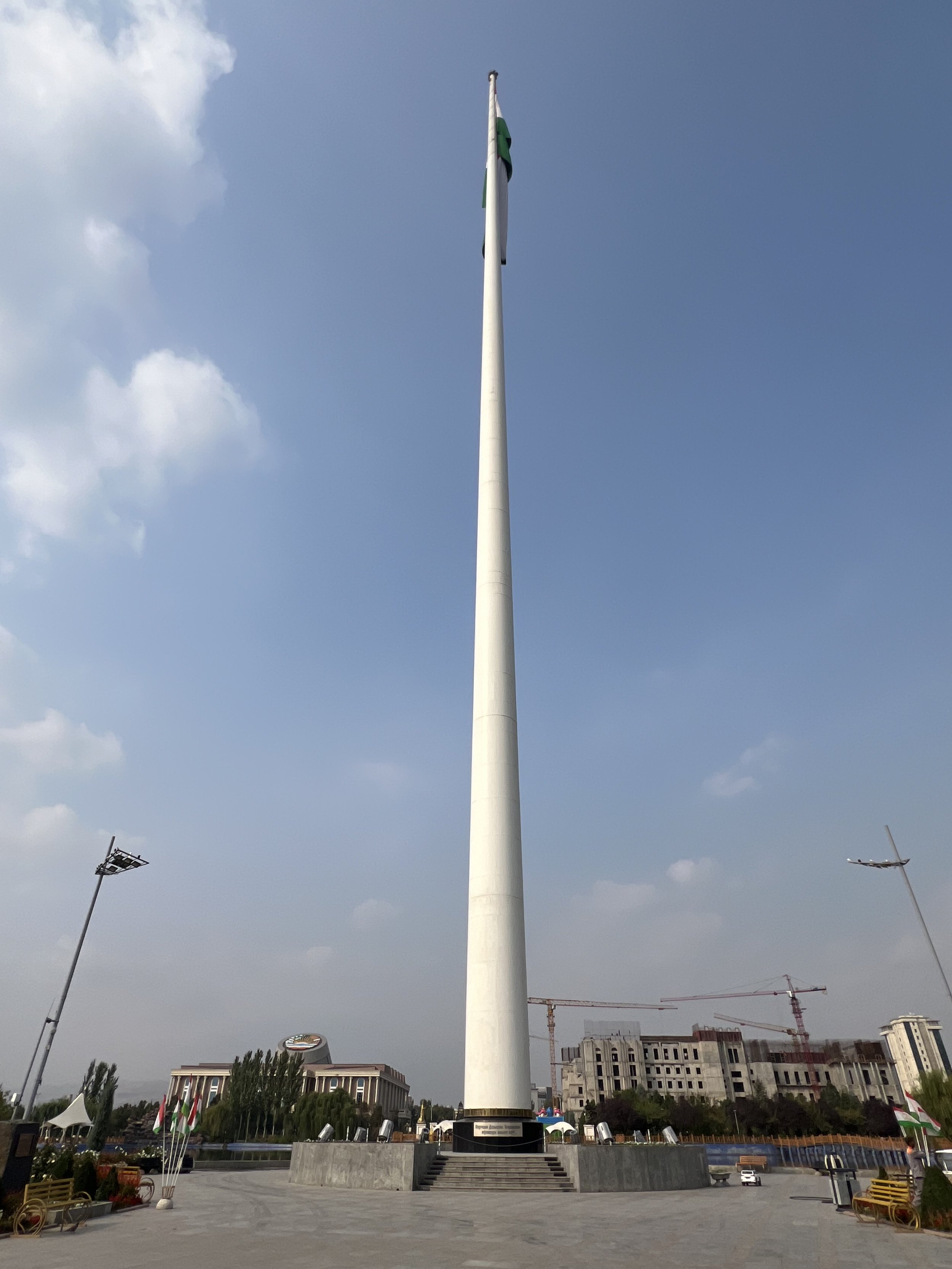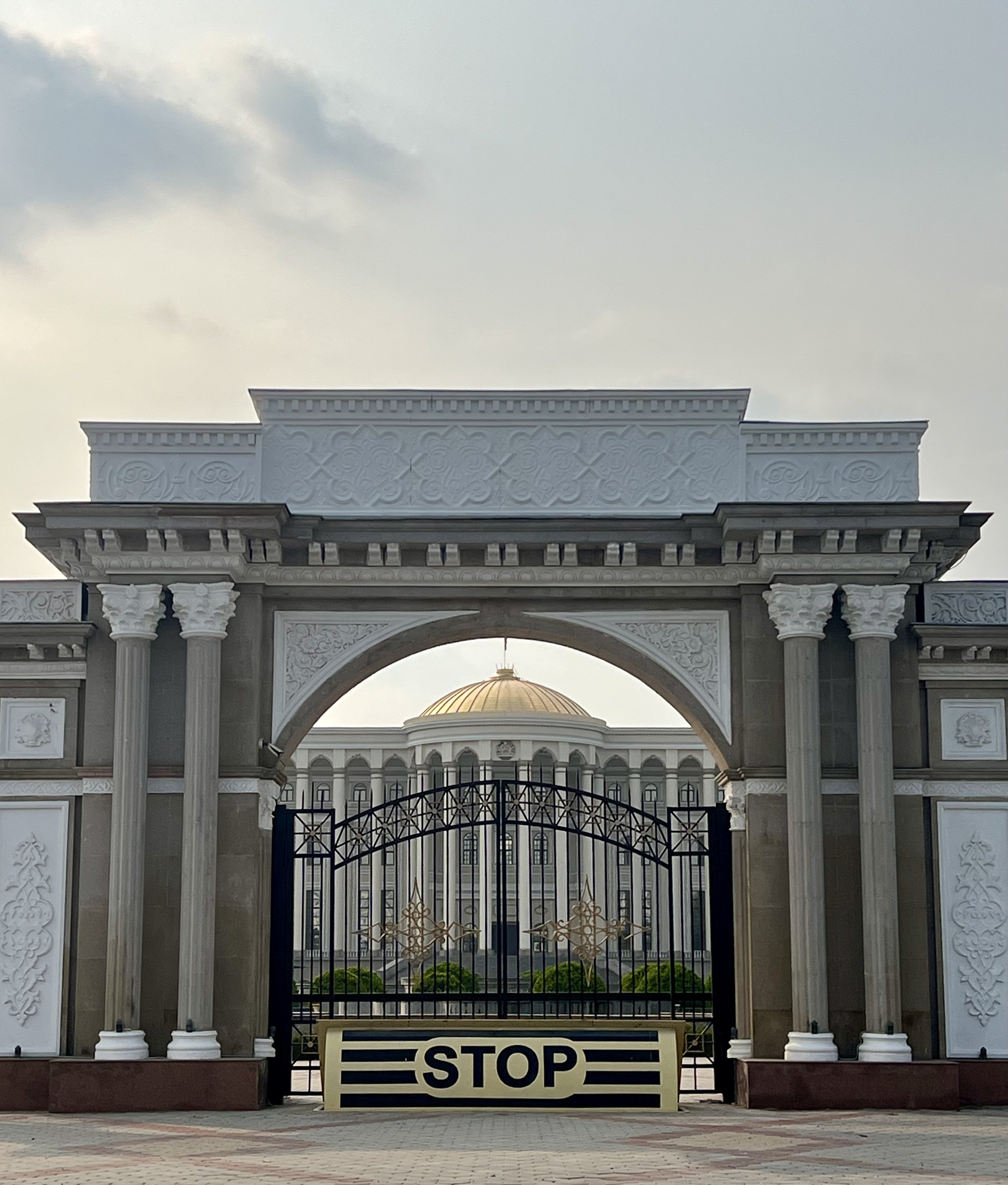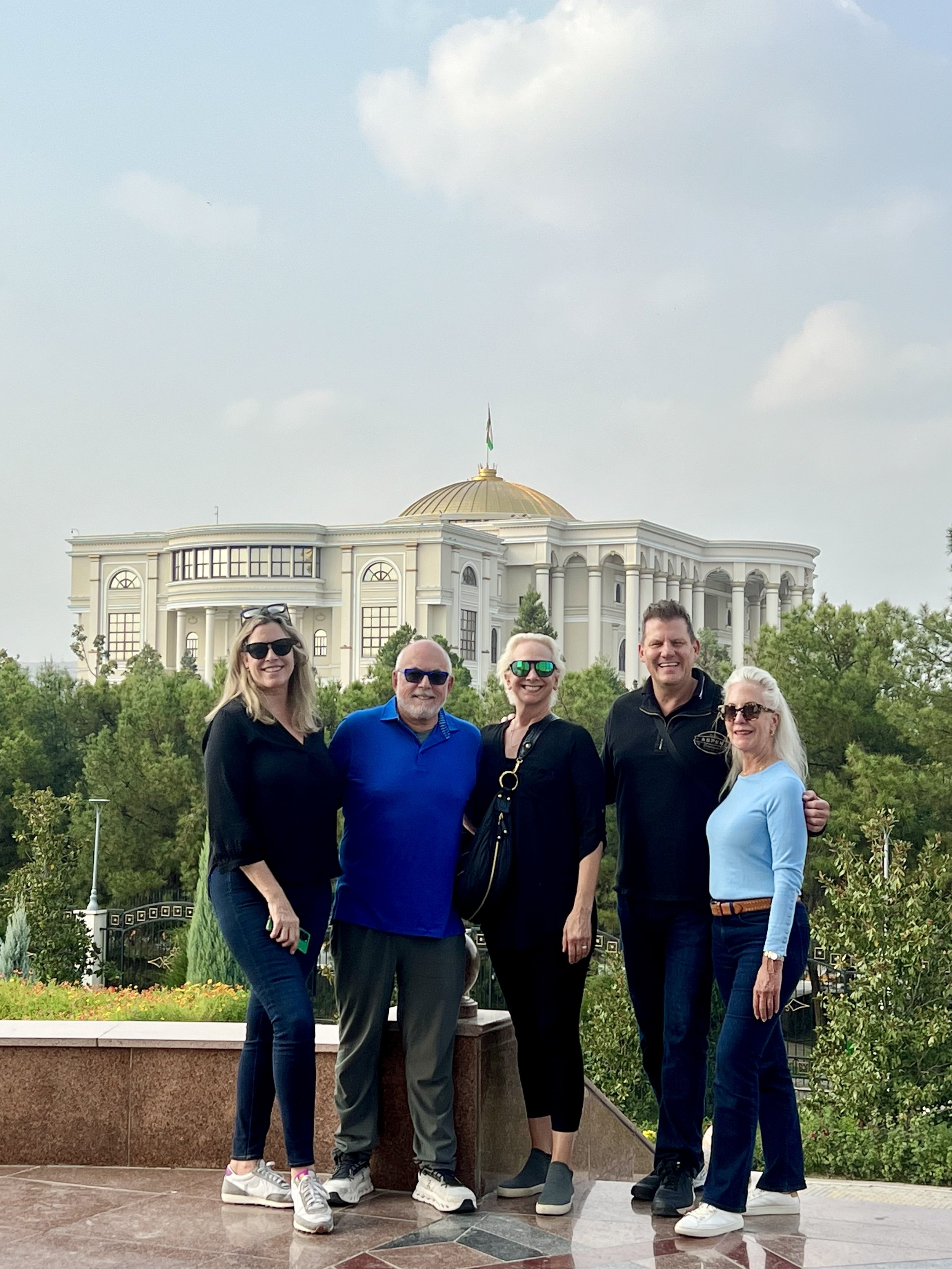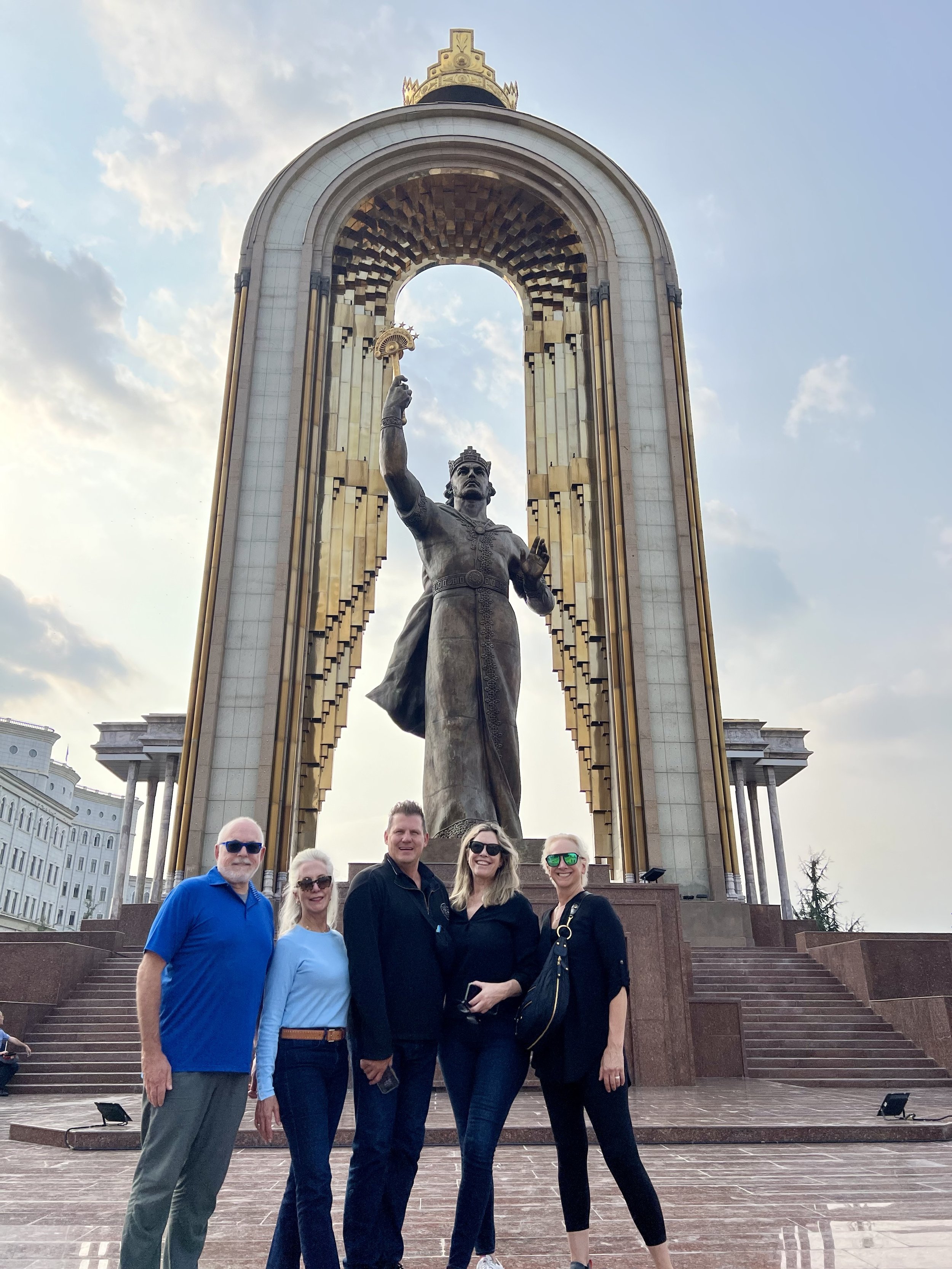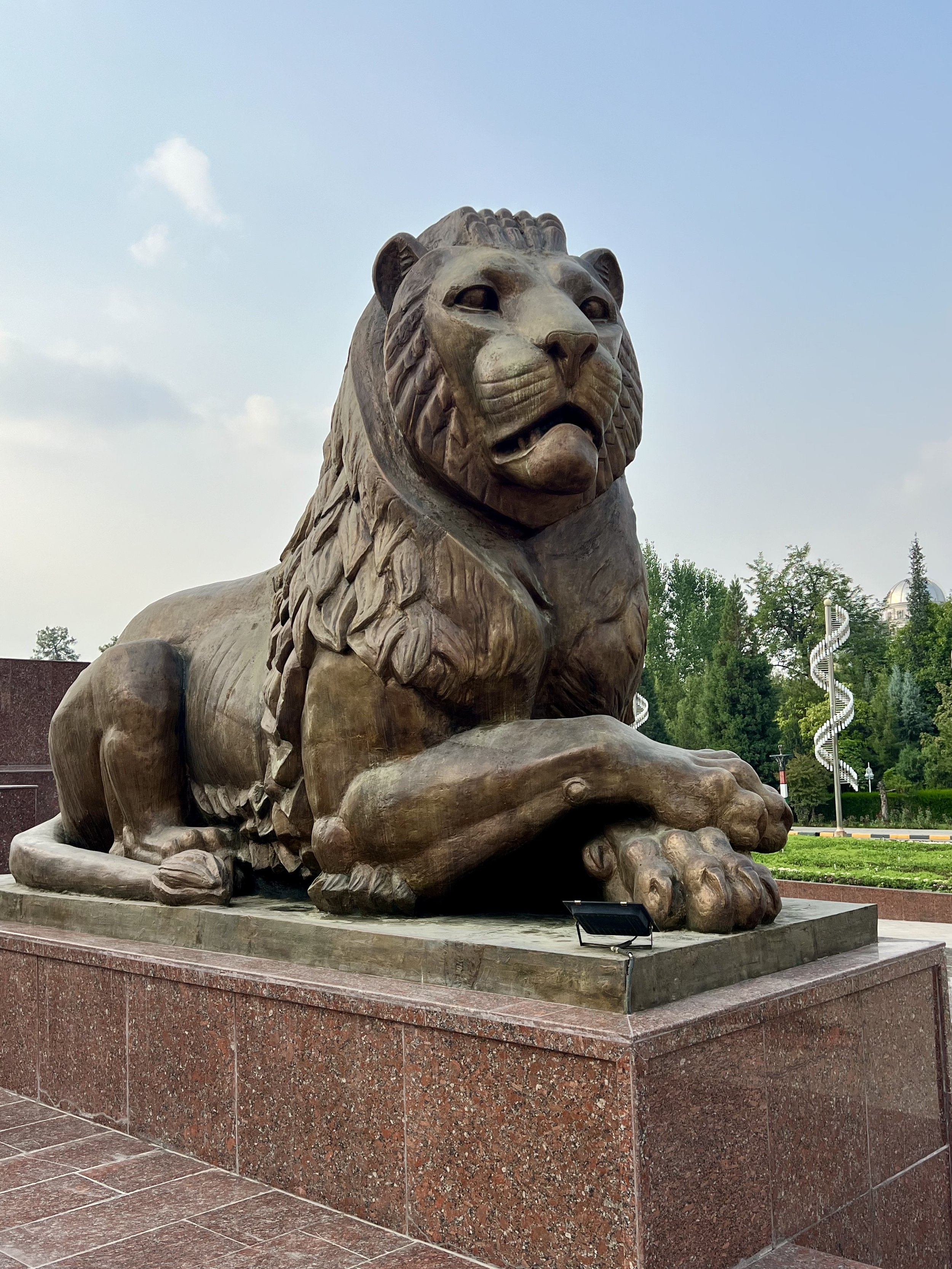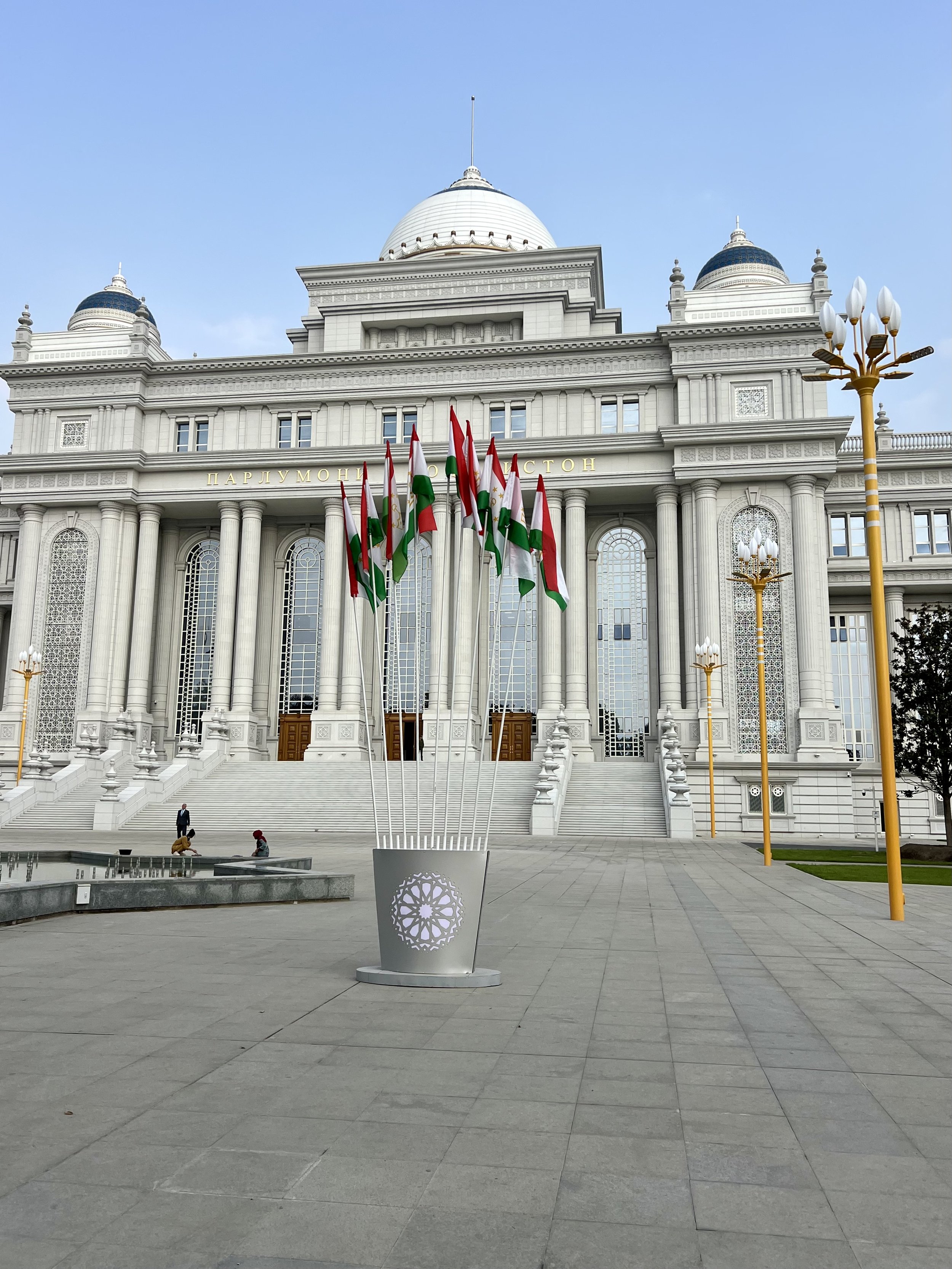Tajikistan
Day #1: The border crossing was a long walk full of patience. We had to depart Uzbekistan first. I was the only one to have to present my visa and convince the border agents with sign language that I was not going to reenter the country. Then we had to walk a distance over the border and go through customs into Tajikistan. Then we walked again to leave immigration to meet up with our guide. It was quite the journey! Also, we were greeted by many goats along the way to Panjakent. Upon arrival we checked into our sparsely decorated hotel, toured a museum, dined at summer poorhouse, visited a market, and went touring at the ruins with stops at the site of ancient town of Pyanjekent and UNESCO site Proto-Urban Site of Sarazm.
The tiles of Tajikistan are very subdued in comparison to Uzbekistan.
Day #2: We headed to the mountains to tour Iskanderkul Lake. What an adventure! After a lunch of local plov, we bumped along on unpaved and uneven roads on the long drive to Dushanbe. Then we hit the famous 5+ meter tunnel on the Pamir Highway followed by the dozen plus smaller tunnels. After finishing our trek, we had to wash the car as to not carry any pollution onto the city.
Day #3: In the morning, we visited Hisor fortress VIIXVII centuries). This historical site has fortified areas and citadel. The fortress used to be the residence of delegates of the Emir of Bukhara. Located on a high hill, it was well defended with 1m thick walls and loopholes for guns and cannons. Inside the fortress, there is a pool and garden and across from the fortress there is a busy market square with a caravan serai and shops. Apart from the entrance gate with its two imposing towers, not much has survived of the fortress. Other interesting sites in Hisor include: the recently restored monuments of “Madrasa I Kuhnaˮ (new school of 16th-17th centuries), mosque and the mausoleum of “Mahdumi Azamˮ 16th century).
Then it was off to National Museum of Antiquities, which has artefacts from the lost cities of the the Kushan Empire and other Buddhist Art. Later, continue to the Mevlana Yakub Charki Mosque and the Green Bazaar.
In the afternoon, we toured the modern city of Dushanbe with a walk in the National Park to see the Ministry of Inner Affairs building and the biggest National Flag in the world – 165 m high pole, 30 m wide, 60 m long.. And we visited Rudake Park, White House, House of Parliament and many monuments.
The watermelon restaurant.
No wind today so it is hard to see the true scale of this flag pole!
